
Genius Makers: The Mavericks Who Brought A. I. To Google, Facebook, and the World
by
Cade Metz
Published 15 Mar 2021
built a system that could read passages from The Lord of the Rings: Metz, “Facebook Aims Its AI at the Game No Computer Can Crack.” Demis Hassabis appeared in an online video: “Interview with Demis Hassabis,” YouTube, https://www.youtube.com/watch?v=EhAjLnT9aL4. “I can’t talk about it yet”: Ibid. Hassabis and DeepMind revealed that their AI system, AlphaGo: Cade Metz, “In a Huge Breakthrough, Google’s AI Beats a Top Player at the Game of Go,” Wired, January 27, 2016, https://www.wired.com/2016/01/in-a-huge-breakthrough-googles-ai-beats-a-top-player-at-the-game-of-go/. Demis Hassabis and several other DeepMind researchers: Cade Metz, “What the AI Behind AlphaGo Can Teach Us About Being Human,” Wired, May 19, 2016, https://www.wired.com/2016/05/google-alpha-go-ai/.
…
ERIC SCHMIDT, chairman. AT DEEPMIND ALEX GRAVES, the Scottish researcher who built a system that could write in longhand. DEMIS HASSABIS, the British chess prodigy, game designer, and neuroscientist who founded DeepMind, a London AI start-up that would grow into the world’s most celebrated AI lab. KORAY KAVUKCUOGLU, the Turkish researcher who oversaw the lab’s software code. SHANE LEGG, the New Zealander who founded DeepMind alongside Demis Hassabis, intent on building machines that could do anything the brain could do—even as he worried about the dangers this could bring. VLAD MNIH, the Russian researcher who oversaw the creation of a machine that mastered old Atari games.
…
As the lawyer saw it, he had two options: He could hire a professional negotiator and risk angering the companies he hoped would acquire his tiny venture, or he could set up an auction. Hinton chose an auction. In the end, four names joined the bidding for his new company: Baidu, Google, Microsoft, and a two-year-old start-up most of the world had never heard of. This was DeepMind, a London company founded by a young neuroscientist named Demis Hassabis that would grow to become the most celebrated and influential AI lab of the decade. The week of the auction, Alan Eustace, Google’s head of engineering, flew his own twin-engine plane into the airport near the south shore of Lake Tahoe. He and Jeff Dean, Google’s most revered engineer, had dinner with Hinton and his students in the restaurant on the top floor of Harrah’s, a steak house decorated with a thousand empty wine bottles.

Supremacy: AI, ChatGPT, and the Race That Will Change the World
by
Parmy Olson
It Already Has.” The Ezra Klein Show, July 11, 2023. Burton-Hill, Clemency. “The Superhero of Artificial Intelligence.” The Guardian, February 16, 2016. “Demis Hassabis.” Desert Island Discs (podcast), BBC Radio 4, May 21, 2017. “Demis Hassabis, Ph.D.” What It Takes (podcast), American Academy of Achievement, April 23, 2018. “Genius Entrepreneur.” The Bridge, Queens College Cambridge Magazine, September 2014. “Google DeepMind’s Demis Hassabis.” The Bottom Line (podcast), BBC Radio 4, October 16, 2023. Hassabis, Demis. The Elixir Diaries, columns in Edge magazine, also available at https://archive.kontek.net/, 1998–2000.
…
If they were now attached at the hip to a powerful corporation, they might come under greater pressure to release the technology before testing them properly. Amodei’s concerns were shared by Demis Hassabis in London. Around the time OpenAI was preparing to release GPT-3, Sam Altman, Greg Brockman, and Ilya Sutskever had dinner with the founders of DeepMind as part of the ongoing effort to smooth relations between the two rival companies. The meeting was tense. Demis Hassabis made a point of asking Altman why OpenAI was releasing its AI models to the world for anyone to access when dangerous people could misuse them to spread misinformation or build even more harmful AI tools, according to a person who was aware of the discussions.
…
It turned out that in this new world where building AGI required near bottomless resources, people didn’t say no to the tech conglomerates. Across the sea in London, that association was turning into a liability for DeepMind. Demis Hassabis was looking for new scientific milestones that the company could hit to show it was ahead of OpenAI and wow the world after AlphaGo. But his cofounder Mustafa Suleyman was still eager to prove AI could be used for good. For years now, he’d been grappling with a sense of unease about the direction in which his friend Demis Hassabis was steering the company. The chess genius seemed preoccupied with using games and simulations to develop AI, but Suleyman thought they should study the real world, too, even if that meant dealing with lots of messy data.

Architects of Intelligence
by
Martin Ford
Published 16 Nov 2018
She is the co-founder of AI4ALL, an organization focused on attracting women and people from underrepresented groups into the field of AI, which began at Stanford and has now scaled up to universities across the United States. Chapter 8. DEMIS HASSABIS Games are just our training domain. We’re not doing all this work just to solve games; we want to build these general algorithms that we can apply to real-world problems. CO-FOUNDER & CEO OF DEEPMIND AI RESEARCHER AND NEUROSCIENTIST Demis Hassabis is a former child chess prodigy, who started coding and designing video games professionally at age 16. After graduating from Cambridge University, Demis spent a decade leading and founding successful startups focused on video games and simulation.
…
They agreed to give us autonomy as to our research roadmap and our culture, and also to staying in London, which was very important to me. Finally, they also agreed to have an ethics board concerning our technology, which was very unusual but very prescient of them. MARTIN FORD: Why did you choose to be in London, and not Silicon Valley? Is that a Demis Hassabis or a DeepMind thing? DEMIS HASSABIS: Both really. I’m a born-and-bred Londoner, and I love London, but at the same time, I thought it was a competitive advantage because the UK and Europe have amazing universities in the field of AI like Cambridge and Oxford. But also, at the time there was no real ambitious research company in the UK, or really in Europe, so our hiring prospects were high, especially with all these universities outputting great postgraduate and graduate students.
…
Ultimately, this is going to be of global significance and having different voices about how to use it, what to use it for, and how to distribute the proceeds, is important. MARTIN FORD: I believe you’re also opening up labs in other European cities? DEMIS HASSABIS: We’ve opened a small research lab in Paris, which is our first continental European office. We’ve also opened two labs in Canada in Alberta and Montreal. More recently, since joining Google, we now have an applied team office in Mountain View, California who are right next to the Google teams that we work with. MARTIN FORD: How closely do you work with the other AI teams at Google? DEMIS HASSABIS: Google’s a huge place, and there are thousands of people working on every aspect of machine learning and AI, from both a very applied perspective to a pure research point of view.

Artificial Intelligence: A Guide for Thinking Humans
by
Melanie Mitchell
Published 14 Oct 2019
Johns, “Transferring End-to-End Visuomotor Control from Simulation to Real World for a Multi-stage Task,” in Proceedings of the First Annual Conference on Robot Learning, CoRL (2017); M. Cutler, T. J. Walsh, and J. P. How, “Real-World Reinforcement Learning via Multifidelity Simulators,” IEEE Transactions on Robotics 31, no. 3 (2015): 655–71. 9: Game On 1. Demis Hassabis, quoted in P. Iwaniuk, “A Conversation with Demis Hassabis, the Bullfrog AI Prodigy Now Finding Solutions to the World’s Big Problems,” PCGamesN, accessed Dec. 7, 2018, www.pcgamesn.com/demis-hassabis-interview. 2. Quoted in “From Not Working to Neural Networking,” Economist, June 25, 2016. 3. M. G. Bellemare et al., “The Arcade Learning Environment: An Evaluation Platform for General Agents,” Journal of Artificial Intelligence Research 47 (2013): 253–79. 4.
…
Taylor, “The Concept of ‘Cat Face,’” London Review of Books, Aug. 11, 2016. 26. Quoted in S. Byford, “DeepMind Founder Demis Hassabis on How AI Will Shape the Future,” Verge, March 10, 2016, www.theverge.com/2016/3/10/11192774/demis-hassabis-interview-alphago-google-deepmind-ai. 27. D. Silver et al., “Mastering the Game of Go Without Human Knowledge,” Nature, 550 (2017): 354–59. 28. D. Silver et al., “A General Reinforcement Learning Algorithm That Masters Chess, Shogi, and Go Through Self-Play,” Science 362, no. 6419 (2018): 1140–44. 10: Beyond Games 1. Quoted in P. Iwaniuk, “A Conversation with Demis Hassabis, the Bullfrog AI Prodigy Now Finding Solutions to the World’s Big Problems,” PCGamesN, accessed Dec. 7, 2018, www.pcgamesn.com/demis-hassabis-interview. 2.
…
Often it takes a kind of cabalistic knowledge that students of machine learning gain both from their apprenticeships with experts and from hard-won experience. As Eric Horvitz, director of Microsoft’s research lab, characterized it, “Right now, what we are doing is not a science but a kind of alchemy.”5 And the people who can do this kind of “network whispering” form a small, exclusive club: according to Demis Hassabis, cofounder of Google DeepMind, “It’s almost like an art form to get the best out of these systems.… There’s only a few hundred people in the world that can do that really well.”6 Actually, the number of deep-learning experts is growing quickly; many universities now offer courses in the subject, and a growing list of companies have started their own deep-learning training programs for employees.

Rule of the Robots: How Artificial Intelligence Will Transform Everything
by
Martin Ford
Published 13 Sep 2021
Filip Piekniewski, “AI winter is well on its way,” Piekniewski’s Blog, May 28, 2018, blog.piekniewski.info/2018/05/28/ai-winter-is-well-on-its-way/. 16. Ford, Interview with Jeffery Dean, in Architects of Intelligence, p. 377. 17. Ford, Interview with Demis Hassabis, in Architects of Intelligence, p. 171. 18. Andrea Banino, Caswell Barry, Dharshan Kumaran and Benigno Uria, “Navigating with grid-like representations in artificial agents,” DeepMind Research Blog, May 9, 2018, deepmind.com/blog/article/grid-cells. 19. Ford, Interview with Demis Hassabis, in Architects of Intelligence, p. 173. 20. Andrea Banino, Caswell Barry, Benigno Uria et al., “Vector-based navigation using grid-like representations in artificial agents,” Nature, volume 557, pp. 429–433 (2018), May 9, 2018, www.nature.com/articles/s41586-018-0102-6. 21.
…
According to one theory, Go was invented during the reign of the emperor Yao, sometime prior to 2000 BC.6 The ability to play Go, along with expertise in calligraphy, painting and playing a stringed musical instrument, was viewed as one of the four primary arts that marked ancient Chinese scholarship. Unlike chess, the game of Go is so complex as to be immune to the onslaught of brute force algorithms. During the course of the game, the board, which consists of a nineteen-by-nineteen grid, is largely filled with black and white game pieces called “stones.” As DeepMind CEO Demis Hassabis often likes to point out when he discusses AlphaGo’s accomplishment, the number of possible arrangements of the stones on the board exceeds the estimated number of atoms in the known universe. Over the thousands of years that the game has been played, it is extraordinarily—indeed vanishingly—unlikely that any two games have unfolded in identical fashion.
…
What they all have in common is that their ultimate objectives are modeled on capabilities that, at least so far, are exclusive to human cognition. One important approach is to look directly to the inner workings of the human brain for inspiration. These researchers believe that artificial intelligence should be directly informed by neuroscience. The leader in this area is DeepMind. The company’s founder and CEO, Demis Hassabis—unusually for an AI researcher—received his graduate training in neuroscience, rather than computing, and holds a PhD in the field from University College, London. Hassabis told me that the single largest research group at DeepMind consists of neuroscientists who are focused on finding ways to apply the latest insights from brain science to artificial intelligence.17 Their objective is not to replicate the way the brain works in any detailed sense, but rather to be inspired by the basic principles that underlie its operation.
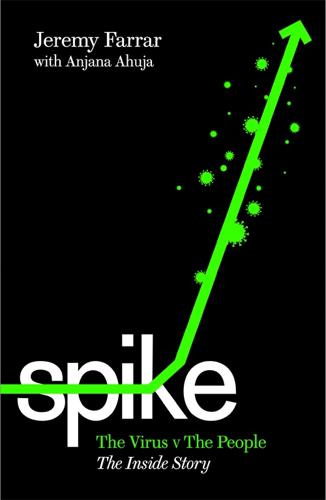
Spike: The Virus vs The People - The Inside Story
by
Jeremy Farrar
and
Anjana Ahuja
Published 15 Jan 2021
Adding in the chief scientists and other emissaries for various government departments, plus the devolved nations, I would guess that SAGE has between 200 and 300 people to call on in total, although there were rarely more than 20 to 30 in attendance (plus others dialling in on often ropey lines). I do not recall Treasury officials at the meetings I attended. Outsiders were occasionally invited in; at one meeting I sat next to Demis Hassabis, a researcher who cofounded artificial intelligence start-up DeepMind. The SAGE meetings mostly took place in a basement at 10 Victoria Street in Westminster, which also houses the Government Office for Science. We would go through security and head downstairs through corridors with peeling paint.
…
We should try to lock everything down as fast as we possibly can.”’ That was my view, and I am sure most people on SAGE agreed. Cummings was also courting the views of three scientists beyond SAGE, to whom he was occasionally sending SAGE papers: Venki Ramakrishnan, president of the Royal Society and a chemistry Nobel laureate; Demis Hassabis; and Timothy Gowers, the British mathematician and Fields medallist. I saw both Demis and Venki at the odd SAGE meeting but not Timothy. Timothy told Cummings in a series of emails that, in his view, the best strategy was to go in hard and early on interventions like lockdowns, because of exponential growth in case numbers.
…
It was a constructive intervention. So, by 16 March, the judgement from outbreak veterans, epidemiological modellers and the UK’s behavioural science community had reached a consensus: act now. SAGE met again on Wednesday 18 March, a day on which 999 fresh coronavirus cases were reported across the UK. I sat between Demis Hassabis and Ian Diamond, the brilliant chief statistician at the Office for National Statistics. There were around a dozen advisers in the room, and as many others dialling in, plus a handful of SAGE administrative staff. We were facing a terrible situation: the UK was estimated to be between two and four weeks behind Italy on its epidemic curve.
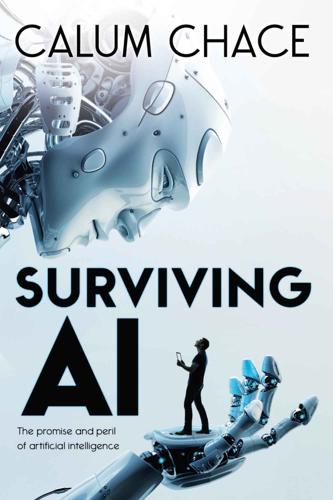
Surviving AI: The Promise and Peril of Artificial Intelligence
by
Calum Chace
Published 28 Jul 2015
The system’s first attempt at each game was disastrous but by playing continuously for 24 hours or so it worked out – through trial and error – the subtleties in the gameplay and scoring system, and played the game better than the best human player. It took longer to master Space Invaders, where the winning strategies are less obvious. DeepMind’s founder, Demis Hassabis, remarked that it is easier to experiment with AI using video games than robots because it avoids the messy business of hydraulics, power and gravity that dealing with the real world entails. But the hand-eye co-ordination could well prove useful with real-world robots as well as video games.
…
Will you be reminded to take your pill in the morning because its bottle starts glowing, or will Hermione alert you? No doubt the outcome will seem obvious in hindsight. It has been said that all industries are now part of the information industry – or heading that way. Much of the cost of developing a modern car – and much of the quality of its performance – lies in the software that controls it. Demis Hassabis has said that AI converts information into knowledge, which he sees as empowering people. The mission statement of Google, the new owner of his company, is to organise the world’s information and make it universally accessible and useful. For many of us, most of the tasks that we perform each day can be broken down into four fundamental skills: looking, reading, writing, and integrating knowledge.
…
Unless you have direct exposure to groups like Deepmind, you have no idea how fast – it is growing at a pace close to exponential. The risk of something seriously dangerous happening is in the five year timeframe. 10 years at most. This is not a case of crying wolf about something I don’t understand.” Demis Hassabis, founder of the company Musk was referring to responded by downplaying the immediacy of the threat: “We agree with him there are risks that need to be borne in mind, but we’re decades away from any sort of technology that we need to worry about,” Whatever you think of Musk’s warnings, he has at least put his money where his mouth is.

The Deep Learning Revolution (The MIT Press)
by
Terrence J. Sejnowski
Published 27 Sep 2018
Indeed, stage actors know that if they don’t have butterflies in their stomachs before their performances, they won’t be Figure 1.9 Lee Sedol after losing the Go Challenge Match in March 2016. The Rise of Machine Learning 19 Figure 1.10 Demis Hassabis (left) and Ke Jie meet after the historic Go match in China in 2017, holding a board with Ke Jie’s signature. Courtesy of Demis Hassabis. in good form. Their performances follow an inverted U-shaped curve, with their best ones in an optimal state between low and high levels of arousal. Athletes call this being “in the zone.” AlphaGo also defeated a team of five top players on May 26, 2017.
…
In one game, AlphaZero made a bold bishop sacrifice, sometimes used to gain positional advantage, followed by a queen sacrifice, which seemed like a colossal blunder until it led to a checkmate many moves later that neither Stockfish nor humans saw coming. The aliens have landed and the earth will never be the same again. AlphaGo’s developer, DeepMind, was cofounded in 2010 by neuroscientist Demis Hassabis (figure 1.10, left), who had been a postdoctoral fellow at University College London’s Gatsby Computational Neuroscience Unit (directed by Peter Dayan, a former postdoctoral fellow in my lab and winner of the prestigious Brain Prize in 2017 along with Raymond Dolan and Wolfram Schultz for their research on reward learning).
…
There must be mechanisms based on local patterns of activity in the dendrites, somas and axons of neurons that dynamically regulate the locations and densities of these channels. Several algorithms have been suggested for how this could be accomplished.24 This form of homeostasis is not as well understood as homeostatic synaptic plasticity. What Is Missing? Demis Hassabis and I participated in intense debates about the future of and next priority for artificial intelligence that took place during the Brains, Minds and Machines symposium at the 2015 NIPS Conference in Montreal and the Bits and Brains workshop at the NIPS 2016 Conference in Barcelona. There are still many open questions in AI that need to be addressed.
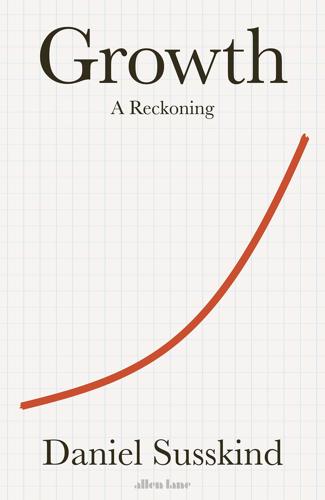
Growth: A Reckoning
by
Daniel Susskind
Published 16 Apr 2024
, www.johndcook.com/blog/2011/04/25/chasing-grants/. 76 ‘Transcript: Ezra Klein Interviews Patrick Collison’, The New York Times, 27 September 2022. 77 See, for example, BEIS, UK Innovation Strategy: Leading the Future by Creating It (July) 2021, assets.publishing.service.gov.uk/government/uploads/system/uploads/attachment_data/file/1009577/uk-innovation-strategy.pdf. 78 Pamela McCorduck, ‘Artificial Intelligence: An Aperçu’, Daedalus, 117:1 (Winter 1988), 65–83, at p. 72. 79 Susskind and Susskind, The Future of the Professions, p. 48. 80 Susskind and Susskind, The Future of the Professions, p. 49. 81 ‘I Was There When: AI Helped Create a Vaccine’, MIT Technology Review, 26 August 2022, www.technologyreview.com/2022/08/26/1058743/i-was-there-when-ai-helped-create-a-vaccine-covid-moderna-mrna/. 82 Lex Fridman discussion with Demis Hassabis, 1 July 2022: lexfridman.com/demis-hassabis/. 83 Tim Schröder, ‘The Protein Puzzle’, Max Planck Research, 2017. 84 Ewen Callaway, ‘Revolutionary Cryo-EM is Taking Over Structural Biology’, Nature, 10 February 2020. 85 Lex Fridman discussion with Demis Hassabis. 86 Matthew Sparkes, ‘DeepMind’s AI Uncovers Structure of 98.5 Per Cent of Human Proteins’, New Scientist, 22 July 2021. 87 Christian Anfinsen, ‘Studies on the Principles that Govern the Folding of Protein Chains’, Nobel Lecture, 11 December 1972, referenced in Lex Fridman discussion with Demis Hassabis. 88 Andrew Senior et al., ‘Improved Protein Structure Prediction Using Potentials from Deep Learning’, Nature, 577 (2020). 89 twitter.com/demishassabis/status/1620762940608765954. 90 Paul Romer, ‘Technologies, Rules, and Progress: The Case for Charter Cities’, Centre for Global Development, March 2010. 91 Daniel Susskind, A World Without Work: Technology, Automation and How We Should Respond (London: Allen Lane, 2020), p. 102. 9.
…
It is said that it typically takes a research student in biology their entire PhD to figure out the shape of just one protein – and there are hundreds of thousands of them.85 Until very recently, no more than a measly 17 per cent of the three-dimensional (3-D) shapes of proteins were known.86 Demis Hassabis, the creator of DeepMind, became intrigued by the work of a biologist called Christian Anfinsen. Back in 1963, Anfinsen had given the field a tantalizing glimpse of a different way to solve the folding problem.87 For context, every protein is built up from individual molecules called amino acids, of which there are twenty.
…
, www.johndcook.com/blog/2011/04/25/chasing-grants/. 76 ‘Transcript: Ezra Klein Interviews Patrick Collison’, The New York Times, 27 September 2022. 77 See, for example, BEIS, UK Innovation Strategy: Leading the Future by Creating It (July) 2021, assets.publishing.service.gov.uk/government/uploads/system/uploads/attachment_data/file/1009577/uk-innovation-strategy.pdf. 78 Pamela McCorduck, ‘Artificial Intelligence: An Aperçu’, Daedalus, 117:1 (Winter 1988), 65–83, at p. 72. 79 Susskind and Susskind, The Future of the Professions, p. 48. 80 Susskind and Susskind, The Future of the Professions, p. 49. 81 ‘I Was There When: AI Helped Create a Vaccine’, MIT Technology Review, 26 August 2022, www.technologyreview.com/2022/08/26/1058743/i-was-there-when-ai-helped-create-a-vaccine-covid-moderna-mrna/. 82 Lex Fridman discussion with Demis Hassabis, 1 July 2022: lexfridman.com/demis-hassabis/. 83 Tim Schröder, ‘The Protein Puzzle’, Max Planck Research, 2017. 84 Ewen Callaway, ‘Revolutionary Cryo-EM is Taking Over Structural Biology’, Nature, 10 February 2020. 85 Lex Fridman discussion with Demis Hassabis. 86 Matthew Sparkes, ‘DeepMind’s AI Uncovers Structure of 98.5 Per Cent of Human Proteins’, New Scientist, 22 July 2021. 87 Christian Anfinsen, ‘Studies on the Principles that Govern the Folding of Protein Chains’, Nobel Lecture, 11 December 1972, referenced in Lex Fridman discussion with Demis Hassabis. 88 Andrew Senior et al., ‘Improved Protein Structure Prediction Using Potentials from Deep Learning’, Nature, 577 (2020). 89 twitter.com/demishassabis/status/1620762940608765954. 90 Paul Romer, ‘Technologies, Rules, and Progress: The Case for Charter Cities’, Centre for Global Development, March 2010. 91 Daniel Susskind, A World Without Work: Technology, Automation and How We Should Respond (London: Allen Lane, 2020), p. 102. 9.
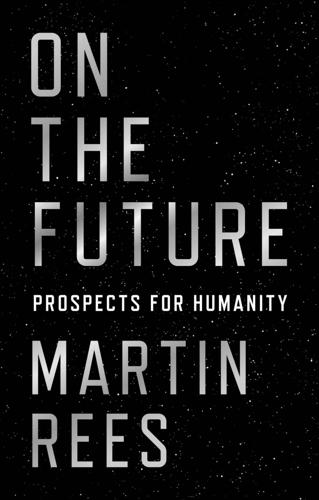
On the Future: Prospects for Humanity
by
Martin J. Rees
Published 14 Oct 2018
I’m therefore grateful for the feedback from listeners and readers. And I acknowledge with special gratitude the input (knowing or unknowing) from friends and colleagues with specialised expertise, who are not specifically quoted in the text. Among them are (alphabetically) Partha Dasgupta, Stu Feldman, Ian Golden, Demis Hassabis, Hugh Hunt, Charlie Kennel, David King, Seán Ó hÉigeartaigh, Catharine Rhodes, Richard Roberts, Eric Schmidt, and Julius Weitzdorfer. I am specially grateful to Ingrid Gnerlich of Princeton University Press for instigating the book, and for her advice while I was writing it. I’m also grateful to Dawn Hall for the copyediting, to Julie Shawvan for the index, to Chris Ferrante for the text design, and to Jill Harris, Sara Henning-Stout, Alison Kalett, Debra Liese, Donna Liese, Arthur Werneck, and Kimberley Williams from the Press for their efficiency in seeing the book through the publishing process.
…
They learn to translate by reading millions of pages of (for example) multilingual European Union documents (they never get bored!). They learn to identify dogs, cats, and human faces by ‘crunching’ through millions of images viewed from different perspectives. Exciting advances have been spearheaded by DeepMind, a London company now owned by Google. DeepMind’s cofounder and CEO, Demis Hassabis, has had a precocious career. At thirteen he was ranked the number two chess champion in the world for his category. He qualified for admission to Cambridge at fifteen but delayed admission for two years, during which time he worked on computer games, including conceiving the highly successful Theme Park.
…
In regard to all these post-2050 speculations, we don’t know where the boundary lies between what may happen and what will remain science fiction—just as we don’t know whether to take seriously Freeman Dyson’s vision of biohacking by children. There are widely divergent views. Some experts, for instance Stuart Russell at Berkeley, and Demis Hassabis of DeepMind, think that the AI field, like synthetic biotech, already needs guidelines for ‘responsible innovation’. Moreover, the fact that AlphaGo achieved a goal that its creators thought would have taken several more years to reach has rendered DeepMind’s staff even more bullish about the speed of advancement.

Outnumbered: From Facebook and Google to Fake News and Filter-Bubbles – the Algorithms That Control Our Lives
by
David Sumpter
Published 18 Jun 2018
The DeepMind team, which had won at Go and Space Invaders, has helped Google improve energy efficiency of its servers and developed more realistic speech for the company’s personal assistant. Another application area is DeepMind Health, a project one of the London Googlers had told me about when I visited them. The aim is to look at how the National Health Service in the UK collects and manages patient data in order to see how the process can be improved. DeepMind’s CEO Demis Hassabis talks about his team one day producing a ‘high-quality scientific paper where the first author is an AI’. The ultimate goal is to replace many of the difficult intellectual challenges carried out by engineers, doctors and scientists, with solutions created by intelligent machines. The researchers working on these projects often claim they are making small steps towards a more general artificial intelligence.
…
At a meeting of the Future of Life Institute – a charitable organisation in Boston, Massachusetts, focused on dealing with future risks – in January 2017, theoretical physicist Max Tegmark hosted a panel debate about general artificial intelligence.1 The panel included nine of the most influential men in the field, including entrepreneur and Tesla CEO Elon Musk; the Google guru Ray Kurzweil; DeepMind’s founder Demis Hassabis and Nick Bostrom, the philosopher who has mapped our way to, what he calls, ‘superintelligence’. The panel members varied in their views as to whether human-level machine intelligence would come gradually or all of a sudden, or whether it will be good or bad for humanity. But they all agreed that a general form of AI was more or less inevitable.
…
In another discussion at the same conference as Max Tegmark’s panel debate, Yan Le Cun, inventor of convolutional neural networks and Facebook’s lead AI researcher, described how solving the image-identification problem, using his method, had been like climbing over one mountain.4 Now they were over the top and back in a valley looking up at the next peak. Yan didn’t know how many more mountains there were to climb, but thought there could be ‘another 50’. DeepMind’s Demis Hassabis put the number of mountains at less than 20. In his view, these mountains each comprise a list of unsolved problems about how we simulate different, known properties of the brain.5 The mountain metaphor raises more questions than it answers. How do they know from looking at the next mountain if it can be conquered?

The Rationalist's Guide to the Galaxy: Superintelligent AI and the Geeks Who Are Trying to Save Humanity's Future
by
Tom Chivers
Published 12 Jun 2019
I’d mentioned Slate Star Codex, the Rationalist Scott Alexander’s blog, earlier in the conversation. ‘Scott has a very good blog post listing all the AI researchers who think it’s a serious problem,’ Ord told me, which indeed he does: it’s called ‘AI researchers on AI risk’2 and was published in 2015. ‘It’s a very long list, including, for example, [DeepMind co-founders] Demis Hassabis and Shane Legg. The world’s biggest AI company is run by people who think this is a real concern.’ There are several other high-profile names on the list, including Murray Shanahan. I asked him about it as well, and he said – with a lot of caveats – that AI risk really is a thing. ‘My view is probably not that far from the highly nuanced Nick Bostrom view, which is that there’s an important argument here that deserves to be taken seriously.’
…
It was, and I hope this isn’t too rude, the random musings of a load of young, crankish men on the early internet. Now it’s the subject of whole departments at several major universities, and discussed by major leading intellectuals: Martin Rees, the late Stephen Hawking, Bill Gates. Google’s DeepMind is explicitly worried about it; co-founders Shane Legg and Demis Hassabis both take it seriously. ‘It’s been amazingly quick progress,’ commented Ajeya Cotra, of OpenPhil. ‘I think the discourse around technical safety of these in 2014, compared to now, feels like different worlds.’ Bostrom’s book Superintelligence was a turning point, she said. It was a New York Times bestseller, and brought serious academic heft to the field.
…
Luke Muehlhauser and Anna Salamon, ‘Intelligence explosion: evidence and import’, 2012 https://intelligence.org/files/IE-EI.pdf 5. Eliezer Yudkowsky, ‘Expected creative surprises’, LessWrong sequences, 2008 http://lesswrong.com/lw/v7/expected_creative_surprises/ 6. Eliezer Yudkowsky, ‘Belief in intelligence’, LessWrong sequences, 2008 http://lesswrong.com/lw/v8/belief_in_intelligence/ 7. Ibid. 8. Demis Hassabis et al., ‘Mastering chess and shogi by self-play with a general reinforcement learning algorithm’, Arxiv, 2017 https://arxiv.org/pdf/1712.01815.pdf 9. Russell and Norvig, Artificial Intelligence, p. 4 10. Nick Bostrom and Vincent C. Müller, ‘Future progress in artificial intelligence: A survey of expert opinion’, Fundamental Issues of Artificial Intelligence, 2016 https://nickbostrom.com/papers/survey.pdf 11.

The Creativity Code: How AI Is Learning to Write, Paint and Think
by
Marcus Du Sautoy
Published 7 Mar 2019
It set up a public contest with a huge prize and invited one of the world’s leading Go players to take up the challenge. An international champion, Lee Sedol from Korea, stepped forward. The competition would be played over five games with the winner taking home a prize of one million dollars. The name of Sedol’s challenger: AlphaGo. AlphaGo is the brainchild of Demis Hassabis. Hassabis was born in London in 1976 to a Greek Cypriot father and a mother from Singapore. Both parents are teachers and what Hassabis describes as bohemian technophobes. His sister and brother went the creative route, one becoming a composer, the other choosing creative writing. So Hassabis isn’t quite sure where his geeky scientific side came from.
…
They were beginning to be more creative. These were the algorithms DeepMind exploited in its crushing of humanity in the game of Go. They ushered in the new age of machine learning. 5 FROM TOP DOWN TO BOTTOM UP Machines take me by surprise with great frequency. Alan Turing I first met Demis Hassabis a few years before his great Go triumph at a meeting about the future of innovation. New companies were on the lookout for investment from venture capitalists and investors. Some were going to transform the future, but most would flash and burn. The art was for VCs and angel investors to spot the winners.
…
But despite the fact that these algorithms appear to have cracked the musical code, there is nothing stirring inside the machine. These are still our tools, the modern-day digital bullroarers. 13 DEEPMATHEMATICS It takes two to invent anything. The one makes up combinations, the other one chooses. Paul Valéry It was while sitting next to Demis Hassabis at one of the Royal Society’s meetings about the impact that machine learning was going to have on society that I had an idea. It was Hassabis’s algorithm AlphaGo that had started my whole existential crisis about whether the job of being a mathematician would continue to be a human one. Hassabis and I had both recently been made Fellows of the Royal Society, one of the highest accolades for a scientist.

Human Compatible: Artificial Intelligence and the Problem of Control
by
Stuart Russell
Published 7 Oct 2019
A history of Britain’s response to the re-emergence of AI in the 1980s: Brian Oakley and Kenneth Owen, Alvey: Britain’s Strategic Computing Initiative (MIT Press, 1990). 10. The origin of the term GOFAI: John Haugeland, Artificial Intelligence: The Very Idea (MIT Press, 1985). 11. Interview with Demis Hassabis on the future of AI and deep learning: Nick Heath, “Google DeepMind founder Demis Hassabis: Three truths about AI,” TechRepublic, September 24, 2018. APPENDIX C 1. Pearl’s work was recognized by the Turing Award in 2011. 2. Bayes nets in more detail: Every node in the network is annotated with the probability of each possible value, given each possible combination of values for the node’s parents (that is, those nodes that point to it).
…
They epitomized what soon became a pejorative term: Good Old-Fashioned AI, or GOFAI.10 It became fashionable to dismiss logic as irrelevant to AI; indeed, many AI researchers working now in the area of deep learning don’t know anything about logic. This fashion seems likely to fade: if you accept that the world has objects in it that are related to each other in various ways, then first-order logic is going to be relevant, because it provides the basic mathematics of objects and relations. This view is shared by Demis Hassabis, CEO of Google DeepMind:11 You can think about deep learning as it currently is today as the equivalent in the brain to our sensory cortices: our visual cortex or auditory cortex. But, of course, true intelligence is a lot more than just that, you have to recombine it into higher-level thinking and symbolic reasoning, a lot of the things classical AI tried to deal with in the 80s. . . .
…
There are further reasons to think that deep learning may reach a plateau well short of general intelligence, but it’s not my purpose here to diagnose all the problems: others, both inside8 and outside9 the deep learning community, have noted many of them. The point is that simply creating larger and deeper networks and larger data sets and bigger machines is not enough to create human-level AI. We have already seen (in Appendix B) DeepMind CEO Demis Hassabis’s view that “higher-level thinking and symbolic reasoning” are essential for AI. Another prominent deep learning expert, François Chollet, put it this way:10 “Many more applications are completely out of reach for current deep learning techniques—even given vast amounts of human-annotated data. . . .

Robot Rules: Regulating Artificial Intelligence
by
Jacob Turner
Published 29 Oct 2018
For instance, automatic headlights which turn on at night would be mimicking the behaviour of a human being turning the lights on manually, but the behaviour would have been triggered by nothing more complex or mysterious than a light sensor coupled to simple logic gate.45 The 2011 Nevada definition was also under-inclusive because there are various emergent qualities that computer programs can display which go well beyond human capabilities. The manner in which humans solve problems is limited by the hardware available to us: our brains. AI has no such limits. DeepMind’s AlphaGo program achieved superhuman capabilities in Chess, Go, and other board games. DeepMind CEO Demis Hassabis explained: “It doesn’t play like a human, and it doesn’t play like a program, it plays in a third, almost alien, way”.46 At a sufficient point of advancement, it will no longer be accurate to describe AI as duplicating or mimicking the behaviour of humans—it will have surpassed us. 3.2 Rationalist Definitions More recent AI definitions avoid the link to humanity by focussing on thinking or acting rationally.
…
Chapter 482A—Autonomous Vehicles, https://www.leg.state.nv.us/NRS/NRS-482A.html, accessed 1 June 2018. 45Ryan Calo, “Nevada Bill Would Pave the Road to Autonomous Cars”, Centre for Internet and Society Blog, 27 April 2011, http://cyberlaw.stanford.edu/blog/2011/04/nevada-bill-would-pave-road-autonomous-cars, accessed 1 June 2018. 46Will Knight, “Alpha Zero’s “Alien” Chess Shows the Power, and the Peculiarity, of AI”, MIT Technology Review, https://www.technologyreview.com/s/609736/alpha-zeros-alien-chess-shows-the-power-and-the-peculiarity-of-ai/, accessed 1 June 2018. See for the academic paper: David Silver, Thomas Hubert, Julian Schrittwieser, Ioannis Antonoglou, Matthew Lai, Arthur Guez, Marc Lanctot, Laurent Sifre, Dharshan Kumaran, Thore Graepel, Timothy Lillicrap, Karen Simonyan, and Demis Hassabis, “Mastering Chess and Shogi by Self-Play with a General Reinforcement Learning Algorithm”, Cornell University Library Research Paper, 5 December 2017, https://arxiv.org/abs/1712.01815, accessed 1 June 2018. See also Cade Metz, What the AI Behind AlphaGo Can Teach Us About Being Human”, Wired, 19 May 2016, https://www.wired.com/2016/05/google-alpha-go-ai/, accessed 1 June 2018. 47Russell and Norvig, Artificial Intelligence, para. 1.1. 48Nils J.
…
See also the paper published by the DeepMind team: David Silver, Julian Schrittwieser, Karen Simonyan, Ioannis Antonoglou, Aja Huang, Arthur Guez, Thomas Hubert, Lucas Baker, Matthew Lai, Adrian Bolton, Yutian Chen, Timothy Lillicrap, Fan Hui, Laurent Sifre, George van den Driessche, Thore Graepel, and Demis Hassabis, “Mastering the Game of Go Without Human Knowledge”, Nature, Vol. 550 (19 October 2017), 354–359, https://doi.org/10.1038/nature24270, accessed 1 June 2018. 131Silver et al., “AlphaGo Zero: Learning from Scratch”, DeepMind Website, 18 October 2017, https://deepmind.com/blog/alphago-zero-learning-scratch/, accessed 1 June 2018. 132Matej Balog, Alexander L.

The Economic Singularity: Artificial Intelligence and the Death of Capitalism
by
Calum Chace
Published 17 Jul 2016
[ccxlii] Kris Hammond, the founder of Narrative Science whom we met when discussing journalists, says that “everybody thought [winning Jeopardy] was ridiculously impossible, [but now] it feels like they're putting a lot of things under the Watson brand name – but it isn't Watson.”[ccxliii] In March 2016, DeepMind founder Demis Hassabis went as far as to say that Watson is essentially an expert system as opposed to deep learning one.[ccxliv] IBM is unfazed by this kind of criticism. It says that Watson is now being used by hundreds of companies to solve particular problems – companies like the Australian energy group Woodside, which used it to review 20,000 documents from 30 years of engineering projects to identify, for instance, the maximum pressure that a certain type of pipeline can withstand.
…
Ensuring that we survive that event is, I believe, the single most important task facing the next generation or two of humans – along with making sure we don’t blow ourselves up with nuclear weapons, or unleash a pathogen which kills everyone. If we secure the good outcome to the technological singularity, the future of humanity is glorious almost beyond imagination. As DeepMind co-founder Demis Hassabis likes to say, humanity’s plan for the future should consist of two steps: first, solve artificial general intelligence, and second, use that to solve everything else. “Everything else” includes poverty, illness, war and even death itself. The stakes in the economic singularity are not so high (which is why I tackled it second.)
…
utm_content=bufferb9e5d&utm_medium=social&utm_source=twitter.com&utm_campaign=buffer [ccxxxix] http://forbesindia.com/article/hidden-gems/thyrocare-technologies-testing-new-waters-in-medical-diagnostics/41051/1 [ccxl] http://www.ucsf.edu/news/2011/03/9510/new-ucsf-robotic-pharmacy-aims-improve-patient-safety [ccxli] http://www.qmed.com/news/ibms-watson-could-diagnose-cancer-better-doctors [ccxlii] http://www.ft.com/cms/s/2/dced8150-b300-11e5-8358-9a82b43f6b2f.html#axzz3xL3RoRdy [ccxliii] http://www.ft.com/cms/s/2/dced8150-b300-11e5-8358-9a82b43f6b2f.html#axzz3xL3RoRdy [ccxliv] http://www.theverge.com/2016/3/10/11192774/demis-hassabis-interview-alphago-google-deepmind-ai [ccxlv] http://qz.com/567658/searching-for-eureka-ibms-path-back-to-greatness-and-how-it-could-change-the-world/ [ccxlvi] http://www.forbes.com/sites/peterhigh/2016/01/18/ibm-watson-head-mike-rhodin-on-the-future-of-artificial-intelligence/#24204aab3e2922228b9c30cc [ccxlvii] http://www.dotmed.com/news/story/29020 [ccxlviii] http://www.wsj.com/articles/SB10001424052702303983904579093252573814132 [ccxlix] http://www.outpatientsurgery.net/outpatient-surgery-news-and-trends/general-surgical-news-and-reports/ethicon-pulling-sedasys-anesthesia-system--03-10-16 [ccl] http://www.wired.co.uk/news/archive/2016-05/05/autonomous-robot-surgeon [ccli] https://www.edsurge.com/news/2016-04-18-gradescope-raises-2-6m-to-apply-artificial-intelligence-to-grading-exams [cclii] http://www.wsj.com/articles/if-your-teacher-sounds-like-a-robot-you-might-be-on-to-something-1462546621 [ccliii] https://www.sigfig.com/site/#/home [ccliv] http://www.nytimes.com/2016/01/23/your-money/robo-advisers-for-investors-are-not-one-size-fits-all.html?
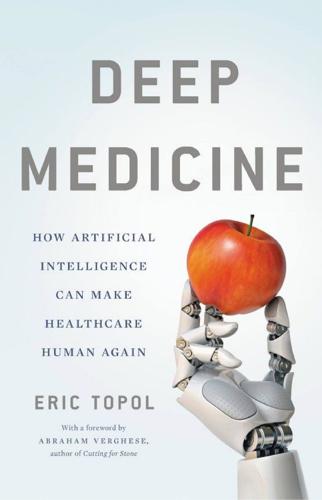
Deep Medicine: How Artificial Intelligence Can Make Healthcare Human Again
by
Eric Topol
Published 1 Jan 2019
champions 2011—Speech recognition NN (Microsoft) 2012—University of Toronto ImageNet classification and cat video recognition (Google Brain, Andrew Ng, Jeff Dean) 2014—DeepFace facial recognition (Facebook) 2015—DeepMind vs. Atari (David Silver, Demis Hassabis) 2015—First AI risk conference (Max Tegmark) 2016—AlphaGo vs. Go (Silver, Demis Hassabis) 2017—AlphaGo Zero vs. Go (Silver, Demis Hassabis) 2017—Libratus vs. poker (Noam Brown, Tuomas Sandholm) 2017—AI Now Institute launched TABLE 4.2: The AI timeline. Kasparov’s book, Deep Thinking, which came out two decades later, provides remarkable personal insights about that pivotal AI turning point.
…
The algorithm integrated a convolutional neural network with reinforcement learning, maneuvering a paddle to hit a brick on a wall.26 This qualified as a “holy shit” moment for Max Tegmark, as he recounted in his book Life 3.0: “The AI was simply told to maximize the score by outputting, at regular intervals, numbers which we (but not the AI) would recognize as codes for which keys to press.” According to DeepMind’s leader, Demis Hassabis, the strategy DeepMind learned to play was unknown to any human “until they learned it from the AI they’d built.” You could therefore interpret this as AI not only surpassing the video game performance of human professionals, but also of its creators. Many other video games have been taken on since, including forty-nine different Atari games.27 A year later, in 2016, DNN AI began taking on humans directly, when a program called AlphaGo triumphed over Lee Sodol, a world champion at the Chinese game of Go.

Power and Progress: Our Thousand-Year Struggle Over Technology and Prosperity
by
Daron Acemoglu
and
Simon Johnson
Published 15 May 2023
Sundar Pichai, “AI is probably…,” is from https://money.cnn.com/2018/01/24/technology/sundar-pichai-google-ai-artificial-intelligence/index.html. Kai-Fu Lee, “AI could be…,” is from Lee (2021). Demis Hassabis, “[By] deepening our capacity,” is from https://theworldin.economist.com/edition/2020/article/17385/demis-hassabis-ais-potential; “Either we need…” is from www.techrepublic.com/article/google-deepmind-founder-demis-hassabis-three-truths-about-ai. “The intelligent revolution…” is from Li (2020). On Ray Kurzweil’s ideas, see Kurzweil (2005). Reid Hoffman, “Could we have a bad…,” is from www.city-journal.org/html/disrupters-14950.html.
…
When all is said and done, the newfound enthusiasm about AI seems an intensification of the same optimism about technology, regardless of whether it focuses on the automation, surveillance, and disempowerment of ordinary people that had already engulfed the digital world. Yet these concerns are not taken seriously by most tech leaders. We are continuously told that AI will bring good. If it creates disruptions, those problems are short-term, inevitable, and easily rectified. If it is creating losers, the solution is more AI. For example, DeepMind’s cofounder, Demis Hassabis, not only thinks that AI “is going to be the most important technology ever invented,” but he is also confident that “by deepening our capacity to ask how and why, AI will advance the frontiers of knowledge and unlock whole new avenues of scientific discovery, improving the lives of billions of people.”
…
The potential, therefore, is for truly pervasive use of AI in the economy and in our lives—for good but often also for bad. In the extreme, the aim becomes the development of completely autonomous, general intelligence, which can do everything that humans can do. In the words of DeepMind cofounder and CEO Demis Hassabis, the objective is “solving intelligence, and then using that to solve everything else.” But is this the best way to develop digital technologies? This question typically remains unasked. Third and more problematically, this approach has pushed the field even further in the direction of automation.

Elon Musk
by
Walter Isaacson
Published 11 Sep 2023
“And if Thornfield Hall burns down and you are blind, I’ll come to you and take care of you.” 40 Artificial Intelligence OpenAI, 2012–2015 With Sam Altman Peter Thiel, the PayPal cofounder who had invested in SpaceX, holds a conference each year with the leaders of companies financed by his Founders Fund. At the 2012 gathering, Musk met Demis Hassabis, a neuroscientist, video-game designer, and artificial intelligence researcher with a courteous manner that conceals a competitive mind. A chess prodigy at age four, he became the five-time champion of an international Mind Sports Olympiad that includes competition in chess, poker, Mastermind, and backgammon.
…
For a decade, Musk had been worried about the danger that artificial intelligence could someday run amok—develop a mind of its own, so to speak—and threaten humanity. When Google cofounder Larry Page dismissed his concerns, calling him a “specist” for favoring the human species over other forms of intelligence, it destroyed their friendship. Musk tried to prevent Page and Google from purchasing DeepMind, the company formed by AI pioneer Demis Hassabis. When that failed, he formed a competing lab, a nonprofit called OpenAI, with Sam Altman in 2015. Humans can be pricklier than machines, and Musk eventually split with Altman, left the board of OpenAI, and lured away its high-profile engineer Andrej Karpathy to lead the Autopilot team at Tesla.
…
VP of flight reliability, SpaceX. Kunal Girotra. Former head of Tesla Energy. Juleanna Glover. Public relations consultant, Washington, DC. Antonio Gracias. Friend of Musk and investor. Michael Grimes. Managing director, Morgan Stanley. Trip Harriss. Manager of launch site operations, SpaceX. Demis Hassabis. Cofounder of DeepMind. Amber Heard. Actress, former girlfriend of Musk. Reid Hoffman. Cofounder of LinkedIn and PayPal. Ken Howery. Cofounder of PayPal and Musk friend. Lucas Hughes. Former finance director, SpaceX. Jared Isaacman. Entrepreneur and Inspiration4 commander. RJ Johnson. Former head of Tesla Energy.

The Industries of the Future
by
Alec Ross
Published 2 Feb 2016
The private sector is also investing: John Markoff, “Google Adds to Its Menagerie of Robots,” New York Times, December 14, 2013, http://www.nytimes.com/2013/12/14/technology/google-adds-to-its-menagerie-of-robots.html?_r=1&. As a kid, Hassabis was: Samuel Gibbs, “Demis Hassabis: 15 Facts about the DeepMind Technologies Founder,” Guardian, January 28, 2014, http://www.theguardian.com/technology/shortcuts/2014/jan/28/demis-hassabis-15-facts-deepmind-technologies-founder-google; “Breakthrough of the Year: The Runners-Up,” Science 318, no. 5858 (2007): 1844–49, doi:10.1126/science.318.5858.1844a. At DeepMind, Demis and his colleagues: “The Last AI Breakthrough DeepMind Made before Google Bought It for $400m,” Physics arXiv (Blog), https://medium.com/the-physics-arxiv-blog/the-last-ai-breakthrough-deepmind-made-before-google-bought-it-for-400m-7952031ee5e1.
…
Sweden has similarly earmarked millions to give out to individuals and corporations through innovation awards such as Robotdalen (“robot valley”), launched in 2011. The private sector is also investing at increasingly higher levels. Google purchased Boston Dynamics, a leading robotics design company with Pentagon contracts, for an untold sum in December 2013. It also bought DeepMind, a London-based artificial intelligence company founded by wunderkind Demis Hassabis. As a kid, Hassabis was the second-highest-ranked chess player in the world under the age of 14, and while he was getting his PhD in cognitive neuroscience, he was acknowledged by Science magazine for making one of the ten most important science breakthroughs of the year after developing a new biological theory for how imagination and memory work in the brain.
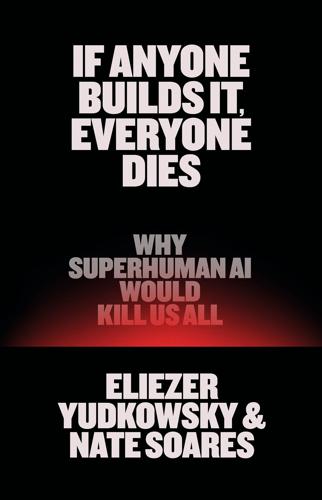
If Anyone Builds It, Everyone Dies: Why Superhuman AI Would Kill Us All
by
Eliezer Yudkowsky
and
Nate Soares
Published 15 Sep 2025
The organization mostly held workshops for interested scientists and housed a few promising researchers. We tried to figure out the math for understanding and shaping superhuman machine intelligence, and for predicting how it might go wrong. MIRI also had some downstream effects that we now regard with ambivalence or regret. At a conference we organized, we introduced Demis Hassabis and Shane Legg, the founders of what would become Google DeepMind, to their first major funder. And Sam Altman, CEO of OpenAI, once claimed that Yudkowsky had “got many of us interested in AGI”vi and “was critical in the decision to start OpenAI.”vii MIRI’s history is complicated, but one way of summarizing our relationship to the larger field might be this: Years before any of the current AI companies existed, MIRI’s warnings were known as the ones you needed to dismiss if you wanted to work on building genuinely smart AI, despite the risks of extinction.
…
But the most common response, back then, was for skeptics to agree with one another that superintelligence would surely have to go through a long, drawn-out, incremental process, measured more in months than in hours, to predict… … the sort of protein folds that AlphaFold 3 can easily predict today. Google DeepMind cracked the protein folding problem between the years of 2018 and 2022 (with AIs named AlphaFold 1, AlphaFold 2, and AlphaFold 3). That was the work for which Demis Hassabis, co-founder of DeepMind, won the Nobel Prize in Chemistry. Did I just get lucky with my prediction? That’s always worth worrying about, when you’re hearing about someone in part because of their successful predictions. But notice that what I predicted, and what the skeptics doubted, was something much weaker than what actually came to pass.

The Optimist: Sam Altman, OpenAI, and the Race to Invent the Future
by
Keach Hagey
Published 19 May 2025
Legg went on to get his own PhD, writing a dissertation on “Machine Super Intelligence” that noted the technology could become an existential threat, and then moved into a postdoctoral fellowship at University College London’s Gatsby Computational Neuroscience Unit, a lab that encompassed neuroscience, machine learning, and AI. There, he met a gaming savant from London named Demis Hassabis, the son of a Singaporean mother and Greek Cypriot father. Hassabis had once been the second-ranked chess player in the world under the age of fourteen. Now he was focused on building an AI inspired by the human brain. Legg and Hassabis shared a common, deeply unfashionable vision. “It was basically eye-rolling territory,” Legg told the journalist Cade Metz.
…
The letter called for the expansion of research aimed at ensuring AI continued to be “beneficial,” adding, “Our AI systems must do what we want them to do.” Nothing in the letter was very controversial, but the fact that it existed was a huge leap toward the mainstream for a set of beliefs long considered fringe. Among the AI practitioners who signed were DeepMind’s Demis Hassabis and two AI researchers, Ilya Sutskever and Dario Amodei.3 Tegmark was giddy about the conference’s impact, quipping, “Perhaps it was a combination of the sunshine and the wine.”4 At the end, Musk took Tegmark into a private room and told him he was donating $10 million to his institute to put toward AI safety.
…
The number of options available to each of the two players facing a 19 × 19 grid of dark and light pieces was too large for any existing computer to calculate. Even with all the recent advances in neural networks, most assumed it would take at least another decade. But in late January 2016, before the end of OpenAI’s first month of work, DeepMind published a paper in Nature—prestigious journals were Demis Hassabis’s preferred medium—announcing that their AI system, AlphaGo, had defeated a former European Go champion in a closed-door match the previous October. The victory rattled Musk, who emailed Altman and Brockman in February, arguing that the company needed “to do what it takes to get the top talent.

Whiplash: How to Survive Our Faster Future
by
Joi Ito
and
Jeff Howe
Published 6 Dec 2016
By the end of the day the big news wasn’t that AlphaGo had won a second game, but that it had displayed such deeply human qualities—improvisation, creativity, even a kind of grace—in doing so. The machine, we learned, had a soul. A few weeks after the conclusion of the Humans vs. Machines Showdown, Demis Hassabis—one of the artificial intelligence researchers behind Google’s DeepMind—gave a talk at MIT to discuss the match, and how his team had developed AlphaGo. Held in one of the university’s largest lecture halls, the DeepMind event drew a standing-room-only crowd—students were all but hanging off the walls to hear Hassabis describe how their approach to machine learning had allowed their team to prove the experts who had predicted it would take ten years for a computer to beat a virtuoso like Sedol wrong.
…
Thanks to John Seely Brown and John Hagel for The Power of Pull, and to my late adopted godfather, Timothy Leary, for being a “performing philosopher,” showing me how to be disobedient with style, and for “question authority and think for yourself.” Also Barack Obama for helping me with my messaging around “deploy.” Thanks to Seth Godin, J. J. Abrams, Walter Isaacson, Paola Antonelli, Vincenzo Iozzo, Jeremy Rubin, Ron Rivest, Scott E. Page, Mitch Resnick, Demis Hassabis, Sean Bonner, Colin Raney, Scott Hamilton, Ellen Hoffman, Natalie Saltiel, and many others for helping to review and revise the text. My executive assistant, Mika Tanaka, and former assistant Heather deManbey, who have had the thankless task of organizing my schedule and workflow throughout this process.
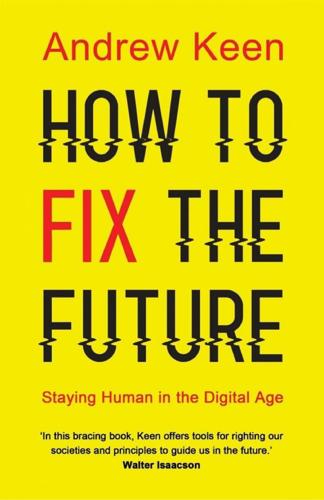
How to Fix the Future: Staying Human in the Digital Age
by
Andrew Keen
Published 1 Mar 2018
These kinds of ethical human judgments are critical, he says, if we are to maintain our control over smart machines. Yet for all his concerns about the demonic potential of artificial intelligence, Price isn’t entirely pessimistic about the future. He is encouraged, for example, by what he describes as the ethical maturity of the three cofounders of DeepMind, particularly Demis Hassabis, its young Cambridge-educated CEO. This is the London-based tech company whose investors include Jaan Tallinn and Elon Musk, a start-up founded in 2011 and then acquired by Google for $500 million in 2014. DeepMind made the headlines in March 2016 when AlphaGo, its specially designed algorithm, defeated a South Korean world champion Go player in this 5,500-year-old Chinese board game, the oldest and one of the most complex games ever invented by humans.
…
We need to level up humans, because our descendants will either conquer the galaxy or extinguish consciousness in the universe forever,” he says, presenting this superintelligence threat as if it’s the plotline of a Star Trek episode.5 I ask Price what these young entrepreneurs, fabulously wealthy and gifted technologists like Deep Mind’s Demis Hassabis, or Y Combinator’s Sam Altman, need to incorporate into their self-prescribed moral code. What, I wonder, should the new men of the twenty-first century be thinking about to ensure that his Australian granddaughter will actually get to see the dawn of the twenty-second century? From where are these “moral criteria” going to come?

Know Thyself
by
Stephen M Fleming
Published 27 Apr 2021
Philosophical Transactions of the Royal Society B: Biological Sciences 366, no. 1566 (2011): 809–822. Sterling, Peter. “Allostasis: A Model of Predictive Regulation.” Physiology & Behavior 106, no. 1 (2012): 5–15. Stuss, D. T., M. P. Alexander, A. Lieberman, and H. Levine. “An Extraordinary Form of Confabulation.” Neurology 28, no. 11 (1978): 1166–1172. Summerfield, Jennifer J., Demis Hassabis, and Eleanor A. Maguire. “Cortical Midline Involvement in Autobiographical Memory.” NeuroImage 44, no. 3 (2009): 1188–1200. Sunstein, Cass R., Sebastian Bobadilla-Suarez, Stephanie C. Lazzaro, and Tali Sharot. “How People Update Beliefs About Climate Change: Good News and Bad News.” Cornell Law Review 102 (2016): 1431.
…
“Neuroscience, Self-Understanding, and Narrative Truth.” AJOB Neuroscience 3, no. 4 (2012): 63–74. Wallis, Jonathan D. “Cross-Species Studies of Orbitofrontal Cortex and Value-Based Decision-Making.” Nature Neuroscience 15, no. 1 (2011): 13–19. Wang, Jane X., Zeb Kurth-Nelson, Dharshan Kumaran, Dhruva Tirumala, Hubert Soyer, Joel Z. Leibo, Demis Hassabis, and Matthew Botvinick. “Prefrontal Cortex as a Meta-Reinforcement Learning System.” Nature Neuroscience 21, no. 6 (2018): 860. Wegner, Daniel M. The Illusion of Conscious Will. Cambridge, MA: MIT Press, 2003. Weil, Leonora G., Stephen M. Fleming, Iroise Dumontheil, Emma J. Kilford, Rimona S.
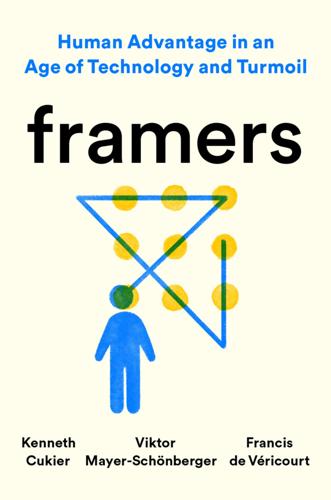
Framers: Human Advantage in an Age of Technology and Turmoil
by
Kenneth Cukier
,
Viktor Mayer-Schönberger
and
Francis de Véricourt
Published 10 May 2021
On the benefits of using data and statistics: Paul E. Meehl, Clinical Versus Statistical Prediction: A Theoretical Analysis and a Review of the Evidence (Minneapolis: University of Minnesota Press, 1954). On AlphaZero: This section benefited greatly from interviews in March 2019 by Kenneth Cukier with Demis Hassabis of DeepMind, as well as the chess grand master Matthew Sadler and master Natasha Regan, for which the authors extend their thanks. AlphaZero’s specifics on model training: David Silver et al., “A General Reinforcement Learning Algorithm That Masters Chess, Shogi and Go,” DeepMind, December 6, 2018, https://deepmind.com/blog/article/alphazero-shedding-new-light-grand-games-chess-shogi-and-go; David Silver et al., “Mastering Chess and Shogi by Self-Play with a General Reinforcement Learning Algorithm,” DeepMind, December 5, 2017, https://arxiv.org/pdf/1712.01815.pdf.
…
Thanks also to Rimjhim Dey and the team at DEY, as well as Penguin and Dutton, for helping to promote the book. Many of the people who grace the pages took the time to speak with us. We thank, in alphabetical order, Andreas Altmann, Michael Baker, Regina Barzilay, Gérald Bronner, Ronald Burt, François Chollet, Daniel Dennett, Scott Donaldson, Inez Fung, Alison Gopnik, Peter Habeler, Demis Hassabis, Alan Kay, Tania Lombrozo, Heinz Machat, Gary Marcus, Robert Merton, Alyssa Milano, Alberto Moel, Nthabiseng Mosia, Scott Page, Judea Pearl, Sander Ruys, Peter Schwartz, Klaus Schweinsberg, Katrin Suder, Noam Tamir, Michael Tomasello, will.i.am (and Sallie Olmsted), and Apple’s communications team.

The Thinking Machine: Jensen Huang, Nvidia, and the World's Most Coveted Microchip
by
Stephen Witt
Published 8 Apr 2025
In his final slide, Huang revealed corporate partners who were beta-testing cuDNN, including Adobe, Facebook, and Netflix. The slide didn’t mention Google, an AI customer too important to be publicly identified. A few weeks before the dog show, Google had acquired DeepMind, the London-based AI company cofounded by Demis Hassabis, Mustafa Suleyman, and Shane Legg. DeepMind had grand ambitions to build the world’s first artificial “general” intelligence, or AGI, unlocking the puzzle of cognition once and for all. Already, the company was developing AlphaGo, a neural network that would, in a series of thrilling matches against grand master Lee Sedol in 2016, crack the Japanese game of Go, a long-standing milestone for AI.
…
AI start-ups raised a cumulative $50 billion in 2023. The money went to medicine, to education, to business platforms, to robotics start-ups. The stock market moved sharply higher in anticipation of gains in productivity to come. Prize committees started distributing hardware to the AI pioneers. Demis Hassabis of DeepMind was given the 2024 Nobel Prize in Chemistry for his work on the protein-folding problem. Geoffrey Hinton was simultaneously awarded the 2024 Nobel Prize in Physics. That same year, Jensen Huang was elected to the National Academy of Engineering, an honor many felt was overdue. And all of this—all of this money, all of this talent, all of this innovation—would pass through a single corporate siphon.
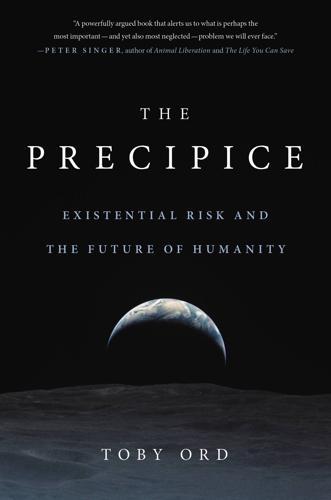
The Precipice: Existential Risk and the Future of Humanity
by
Toby Ord
Published 24 Mar 2020
In part this is because progress may come very suddenly: through unpredictable research breakthroughs, or by rapid scaling-up of the first intelligent systems (for example by rolling them out to thousands of times as much hardware, or allowing them to improve their own intelligence).114 And in part it is because such a momentous change in human affairs may require more than a couple of decades to adequately prepare for. In the words of Demis Hassabis, co-founder of DeepMind: We need to use the downtime, when things are calm, to prepare for when things get serious in the decades to come. The time we have now is valuable, and we need to make use of it.115 DYSTOPIAN SCENARIOS So far we have focused on two kinds of existential catastrophe: extinction and the unrecoverable collapse of civilization.
…
Thank you to Josie Axford-Foster, Beth Barnes, Nick Beckstead, Haydn Belfield, Nick Bostrom, Danny Bressler, Tim Campbell, Natalie Cargill, Shamil Chandaria, Paul Christiano, Teddy Collins, Owen Cotton-Barratt, Andrew Critch, Allan Dafoe, Max Daniel, Richard Danzig, Ben Delo, Daniel Dewey, Luke Ding, Peter Doane, Eric Drexler, Peter Eckersley, Holly Elmore, Sebastian Farquhar, Richard Fisher, Lukas Gloor, Ian Godfrey, Katja Grace, Hilary Greaves, Demis Hassabis, Hiski Haukkala, Alexa Hazel, Kirsten Horton, Holden Karnofsky, Lynn Keller, Luke Kemp, Alexis Kirschbaum, Howie Lempel, Gregory Lewis, Will MacAskill, Vishal Maini, Jason Matheny, Dylan Matthews, Tegan McCaslin, Andreas Mogensen, Luke Muehlhauser, Tim Munday, John Osborne, Richard Parr, Martin Rees, Sebastian Roberts, Max Roser, Anders Sandberg, Carl Shulman, Peter Singer, Andrew Snyder-Beattie, Pablo Stafforini, Jaan Tallinn, Christian Tarsney, Ben Todd, Susan Trammell, Brian Tse, Jonas Vollmer, Julia Wise and Bernadette Young.
…
The only other community of researchers I can imagine who may have estimated such a high probability of their work leading to catastrophically bad outcomes for humanity are the atomic scientists in the lead-up to the bomb. And yet I’m grateful to the researchers for their frank honesty about this. 112 See, for example, Pinker in Enlightenment Now (2018, p. 300). 113 Demis Hassabis has addressed these issues explicitly (Bengio et al., 2017): “The coordination problem is one thing we should focus on now. We want to avoid this harmful race to the finish where corner-cutting starts happening and safety gets cut. That’s going to be a big issue on global scale.” 114 If systems could improve their own intelligence, there is a chance this would lead to a cascade called an “intelligence explosion.”

Life After Google: The Fall of Big Data and the Rise of the Blockchain Economy
by
George Gilder
Published 16 Jul 2018
Google was the recognized intellectual leader of the industry, and its AI ostentation was widely acclaimed. Indeed it signed up most of the world’s AI celebrities, including its spearheads of “deep learning” prowess, from Geoffrey Hinton and Andrew Ng to Jeff Dean, the beleaguered Anthony Levandowski, and Demis Hassabis of DeepMind. If Google had been a university, it would have utterly outshone all others in AI talent. It must have been discouraging, then, to find that Amazon had shrewdly captured much of the market for AI services with its 2014 Alexa and Echo projects. It launched actual hardware to bring AI to everyone’s household in the form of elegantly designed devices that answered questions and ordered products while eschewing ads.
…
Here in early January 2017 many of the leading researchers and luminaries of the information age secretly gathered under the auspices of the Foundational Questions Institute, directed by the MIT physicist Max Tegmark and supported by tens of millions of dollars from Elon Musk and Skype’s co-founder Jaan Tallinn. The most prominent participants were the bright lights of Google: Larry Page, Eric Schmidt, Ray Kurzweil, Demis Hassabis, and Peter Norvig, along with former Googler Andrew Ng, later of Baidu and Stanford. Also there was Facebook’s Yann LeCun, an innovator in deep-learning math and a protégé of Google’s Geoffrey Hinton. A tenured contingent consisted of the technologist Stuart Russell, the philosopher David Chalmers, the catastrophe theorist Nick Bostrom, the nanotech prophet Eric Drexler, the cosmologist Lawrence Krauss, the economist Erik Brynjolfsson, and the “Singularitarian” Vernor Vinge, along with scores of other celebrity scientists.1 They gathered at Asilomar preparing to alert the world to the dire threat posed by . . . well, by themselves—Silicon Valley.

WTF?: What's the Future and Why It's Up to Us
by
Tim O'Reilly
Published 9 Oct 2017
Google purchased DeepMind in 2014 for $500 million, after it demonstrated an AI that had learned to play various older Atari computer games simply by watching them being played. The highly publicized victory of AlphaGo over Lee Sedol, one of the top-ranked human Go players, represented a milestone for AI, because of the difficulty of the game and the impossibility of using brute-force analysis of every possible move. But DeepMind cofounder Demis Hassabis wrote, “We’re still a long way from a machine that can learn to flexibly perform the full range of intellectual tasks a human can—the hallmark of true artificial general intelligence.” Yann LeCun also blasted those who oversold the significance of AlphaGo’s victory, writing, “most of human and animal learning is unsupervised learning.
…
No one even knows what such an intelligence might look like, but people like Nick Bostrom, Stephen Hawking, and Elon Musk postulate that once it exists, it will rapidly outstrip humanity, with unpredictable consequences. Bostrom calls this hypothetical next step in strong AI “artificial superintelligence.” Deep learning pioneers Demis Hassabis and Yann LeCun are skeptical. They believe we’re still a long way from artificial general intelligence. Andrew Ng, formerly the head of AI research for Chinese search giant Baidu, compared worrying about hostile AI of this kind to worrying about overpopulation on Mars. Even if we never achieve artificial general intelligence or artificial superintelligence, though, I believe that there is a third form of AI, which I call hybrid artificial intelligence, in which much of the near-term risk resides.
…
Awakening,” New York Times Magazine, December 14, 2016, https://www.nytimes.com/2016/12/14/magazine/the-great-ai-awakening.html. 167 algorithmic detection of fake news: Jennifer Slegg, “Google Tackles Fake News, Inaccurate Content & Hate Sites in Rater Guidelines Update,” SEM Post, March 14, 2017, http://www.thesempost.com/google-tackles-fake-news-inaccurate-content-hate-sites-rater-guidelines-update/. 167 “directly from raw experience or data”: This claim has been removed from the deepmind.com website, but it can still be found via the Internet Archive. Retrieved March 28, 2016, https://web-beta.archive.org/web/20160328210752/https://deepmind.com/. 167 “the hallmark of true artificial general intelligence”: Demis Hassabis, “What We Learned in Seoul with AlphaGo,” Google Blog, March 16, 2016, https://blog.google/topics/machine-learning /what-we-learned-in-seoul-with-alphago/. 167 “getting to true AI”: Ben Rossi, “Google DeepMind’s AlphaGo Victory Not ‘True AI,’ Says Facebook’s AI Chief,” Information Age, March 14, 2016, http://www.information-age.com/google-deepminds-alphago-victory-not-true-ai-says-face books-ai-chief-123461099/. 169 “thinking about how to make people click ads”: Ashlee Vance, “This Tech Bubble Is Different,” Bloomberg Businessweek, April 14, 2011, https://www.bloomberg.com/news/articles/2011-04-14/this-tech-bubble-is-different.

MegaThreats: Ten Dangerous Trends That Imperil Our Future, and How to Survive Them
by
Nouriel Roubini
Published 17 Oct 2022
“Distinguishing AI-generated text, images and audio from human generated will become extremely difficult,” says Mustafa Suleyman, a cofounder of DeepMind and till recently head of AI policy at Google, as the “transformers” revolution accelerates the power of AI.43 As a consequence, a large number of white-collar jobs using advanced levels of cognition will become obsolete. Humans won’t know that their counterparts are machines. When I met Demis Hassabis—the other cofounder of DeepMind—he compared the coming singularity to super intelligence that resembles ten thousand Einsteins solving any problem of science, medicine, technology, biology, or knowledge at the same time and in parallel. If that is the future, how can any human compete? Indeed, AI initially replaced routine jobs.
…
An intelligence explosion will occur when computers develop motivation to learn on their own at warp speed without human direction. There are no limits to how fast or how much they can learn and what new connections they will find. This is what singularity looks like. Human brains will resemble vacuum tubes in the era of printed circuits, severely limited in capacity. I asked Demis Hassabis whether ideas once relegated to science fiction look real. He predicts that we are only five major technological innovations and about twenty years away from the singularity. Unless humans merge with computers, writer Yuval Harari warns, Homo sapiens are finished. They will become obsolete just like Homo erectus, Homo habilus, and other early humans that have long since vanished.

This Is for Everyone: The Captivating Memoir From the Inventor of the World Wide Web
by
Tim Berners-Lee
Published 8 Sep 2025
We passed through the playfully styled recreational zones and lavish cafeteria before arriving at the staff breakfast and lunch hall, which had been cordoned off for our dinner. This was classic Google style, upbeat and fun, and I was grateful to them for hosting the affair. It turned out to be a momentous occasion in more ways than one, for it was at this twenty-fifth anniversary celebration that I first met Demis Hassabis, one of the brilliant computer science pioneers behind the revolutionary AI start-up DeepMind and now a Nobel Prize winner. Google had acquired DeepMind for $400 million a few months earlier. At the time this was an unprecedented sum for an AI acquisition, although in later years it would come to look like a bargain.
…
If we are about to make something smarter than ourselves, the wise thing to do would be to build it in a sandbox where it can play, but not affect the real world – where it does not have the power to argue for its own improvement, or to be given more resources. To ensure compliance, we require global collaboration and governance – a sort of CERN-like institution where the very best AI researchers can come to collaborate, rather than compete in separate companies as they do now. Indeed, in late 2024 Demis Hassabis, the co-founder of DeepMind with Mustafa Suleyman, issued a call for just such an institution. He is not the only one. One of the benefits of being the inventor of the web is that I am included in a number of global conversations cutting across disciplines and sectors. We need more of these conversations to drive AI collaboration forward.

A World Without Work: Technology, Automation, and How We Should Respond
by
Daniel Susskind
Published 14 Jan 2020
The average salary for a developer in San Francisco, for example, is about $120,000 a year, while the best engineers are treated as superstars and receive pay packages to match.13 Today, when we recount economic history, we punctuate it with people like James Hargreaves, the inventor of the spinning jenny. In the future, when people tell the history of our own time, it will be filled with names like Demis Hassabis, of DeepMind, and other software engineers, as yet unknown. As for processing power, many of the new systems require extraordinarily powerful hardware to run effectively. Often, we take for granted quite how demanding even the most basic digital actions we carry out can be. A single Google search, for instance, requires as much processing power as the entire Apollo space program that put Neil Armstrong and eleven other astronauts on the moon—not simply the processing power used during the flights themselves, but all that was used during planning and execution for the seventeen launches across eleven years.14 Today’s cutting-edge technologies use far more power still.
…
See Autor, “Polanyi’s Paradox and the Shape of Employment Growth,” p. 130; and Dana Remus and Frank Levy, “Can Robots Be Lawyers? Computers, Lawyers, and the Practice of Law,” Georgetown Journal of Legal Ethics 30, no. 3 (2017): 501–58, available at https://papers.ssrn.com/sol3/papers.cfm?abstract_id=2701092. 31. See Demis Hassabis, “Artificial Intelligence: Chess Match of the Century,” Nature 544 (2017): 413–14. 32. Cade Metz, “How Google’s AI Viewed the Move No Human Could Understand,” Wired, 14 March 2016. Also see Max Tegmark, Life 3.0: Being Human in the Age of Artificial Intelligence (London: Penguin Books, 2017), p. 87. 33.

Human Frontiers: The Future of Big Ideas in an Age of Small Thinking
by
Michael Bhaskar
Published 2 Nov 2021
The headlines were breathless: Nature said ‘It will change everything’, Science that ‘the game has changed’.8 If anything AlQuraishi was even more stunned than before, blogging that the problem he'd spent his life trying to solve was now potentially done, leaving him feeling like a child had left the family home.9 ‘It's a breakthrough of the first order, certainly one of the most significant scientific results of my lifetime,’ he said. A fifty-year grand scientific challenge was over, a new realm of biological possibility and understanding broached by the latest AI techniques. AI is already re-accelerating scientific discovery. Demis Hassabis, the co-founder and CEO of DeepMind, talks about this aspect of AI. As he argues, ‘The promise of AI is that it could serve as an extension of our minds and become a meta-solution,’ and in doing so help ‘usher in a new renaissance of discovery, acting as a multiplier for human ingenuity, opening up entirely new areas of inquiry’.10 Our tools, and the potential they embody, are not standing still.
…
Without its toolkit, the Scientific Revolution – not to mention the Reformation and Renaissance – would look very different. This is true of everything since – tools and ideas work in tandem.19 In the twenty-first century our capacity to develop big ideas will rest on the development of our tools more than any other factor. Hence the significance of AI. It is the calculus, the telescope, the compass of our time. Demis Hassabis himself makes the link explicit, calling AI a sort of general-purpose Hubble space telescope for science.20 Big ideas like AlphaFold and AlphaGo, instances of the big idea of deep learning neural networks, are steadily making a difference at the coalface. To see how AI reshapes ideas, consider the volume of data produced by contemporary experiments.

The Coming Wave: Technology, Power, and the Twenty-First Century's Greatest Dilemma
by
Mustafa Suleyman
Published 4 Sep 2023
Here might be a tool, an impossible but extraordinary tool, to help us get through the awesome challenges of the decades ahead, from climate change to aging populations to sustainable food. With this in mind, in a quaint Regency-era office overlooking London’s Russell Square, I co-founded a company called DeepMind with two friends, Demis Hassabis and Shane Legg, in the summer of 2010. This was our goal, one that in retrospect still feels as ambitious and crazy and hopeful as it did back then: replicate the very thing that makes us unique as a species, our intelligence. To achieve this objective, we would need to create a system that could imitate and then eventually outperform all human cognitive abilities, from vision and speech to planning and imagination, and ultimately empathy and creativity.
…
A huge thanks to Gregory Allen, Graham Allison (and the faculty and staff of Harvard’s Belfer Center more widely), Sahar Amer, Anne Applebaum, Julian Baker, Samantha Barber, Gabriella Blum, Nick Bostrom, Ian Bremmer, Erik Brynjolfsson, Ben Buchanan, Sarah Carter, Rewon Child, George Church, Richard Danzig, Jennifer Doudna, Alexandra Eitel, Maria Eitel, Henry Elkus, Kevin Esvelt, Jeremy Fleming, Jack Goldsmith, Al Gore, Tristan Harris, Zaid Hassan, Jordan Hoffman, Joi Ito, Ayana Elizabeth Johnson, Danny Kahneman, Angela Kane, Melanie Katzman, Henry Kissinger, Kevin Klyman, Heinrich Küttler, Eric Lander, Sean Legassick, Aitor Lewkowycz, Leon Marshall, Jason Matheny, Andrew McAfee, Greg McKelvey, Dimitri Mehlhorn, David Miliband, Martha Minow, Geoff Mulgan, Aza Raskin, Tobias Rees, Stuart Russell, Jeffrey Sachs, Eric Schmidt, Bruce Schneier, Marilyn Thompson, Mayo Thompson, Thomas Viney, Maria Vogelauer, Mark Walport, Morwenna White, Scott Young, and Jonathan Zittrain. My co-founders of Inflection, Reid Hoffman and Karén Simonyan, for being wonderful collaborators. And my DeepMind co-founders, Demis Hassabis and Shane Legg, for their partnership over an extraordinary decade. Michael would like to thank his co-founders at Canelo, Iain Millar and Nick Barreto, for their ongoing support, but most of all his incredible wife, Dani, and sons, Monty and Dougie. NOTES For a bibliography of books consulted, please visit the website the-coming-wave.com/bibliography.

What to Think About Machines That Think: Today's Leading Thinkers on the Age of Machine Intelligence
by
John Brockman
Published 5 Oct 2015
MELANIE SWAN The Future Possibility-Space of Intelligence TOR NØRRETRANDERS Love KAI KRAUSE An Uncanny Three-Ring Test for Machina sapiens GEORG DIEZ Free from Us EDUARDO SALCEDO-ALBARÁN Flawless AI Seems Like Science Fiction MARIA SPIROPULU Emergent Hybrid Human/Machine Chimeras THOMAS METZINGER What If They Need to Suffer? BEATRICE GOLOMB Will We Recognize It When It Happens? NOGA ARIKHA Metarepresentation DEMIS HASSABIS, SHANE LEGG & MUSTAFA SULEYMAN Envoi: A Short Distance Ahead—and Plenty to Be Done NOTES ABOUT THE AUTHOR ALSO BY JOHN BROCKMAN CREDITS BACK ADS COPYRIGHT ABOUT THE PUBLISHER ACKNOWLEDGMENTS My thanks to Peter Hubbard of HarperCollins and my agent, Max Brockman, for their continued encouragement.
…
They’re good at tasks, and we’ve become good at using them for our purposes. But until we replicate the embodied emotional being—a feat I don’t believe we can achieve—our machines will continue to serve as occasional analogies for thought and to evolve according to our needs. ENVOI: A SHORT DISTANCE AHEAD—AND PLENTY TO BE DONE DEMIS HASSABIS Vice President of Engineering, Google DeepMind; cofounder, DeepMind Technologies SHANE LEGG AI researcher; cofounder, DeepMind Technologies MUSTAFA SULEYMAN Head of applied AI, Google DeepMind; cofounder, DeepMind Technologies For years we’ve been making the case that artificial intelligence, and in particular the field of machine learning, is making rapid progress and is set to make a whole lot more progress.
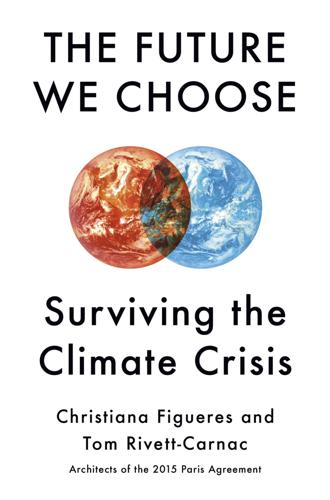
The Future We Choose: Surviving the Climate Crisis
by
Christiana Figueres
and
Tom Rivett-Carnac
Published 25 Feb 2020
World Bank, “Accounting Reveals That Costa Rica’s Forest Wealth Is Greater Than Expected,” May 31, 2016, https://www.worldbank.org/en/news/feature/2016/05/31/accounting-reveals-that-costa-ricas-forest-wealth-is-greater-than-expected. 73. See http://happyplanetindex.org/countries/costa-rica. 74. For a helpful introduction to AI, see Snips, “A 6-Minute Intro to AI,” https://snips.ai/content/intro-to-ai/#ai-metrics. 75. David Silver and Demis Hassabis, “AlphaGo Zero: Starting from Scratch,” DeepMind, October 18, 2017, https://deepmind.com/blog/alphago-zero-learning-scratch/. 76. DeepMind, https://deepmind.com/. 77. Rupert Neate, “Richest 1% Own Half the World’s Wealth, Study Finds,” Guardian (U.S. edition), November 14, 2017, https://www.theguardian.com/inequality/2017/nov/14/worlds-richest-wealth-credit-suisse. 78.

The Age of AI: And Our Human Future
by
Henry A Kissinger
,
Eric Schmidt
and
Daniel Huttenlocher
Published 2 Nov 2021
Mustafa Suleyman, Jack Clark, Craig Mundie, and Maithra Raghu provided indispensable feedback on the entire manuscript, informed by their experiences as innovators, researchers, developers, and educators. Robert Work and Yll Bajraktari of the National Security Commission on Artificial Intelligence (NSCAI) commented on drafts of the security chapter with their characteristic commitment to the responsible defense of the national interest. Demis Hassabis, Dario Amodei, James J. Collins, and Regina Barzilay explained their work—and its profound implications—to us. Eric Lander, Sam Altman, Reid Hoffman, Jonathan Rosenberg, Samantha Power, Jared Cohen, James Manyika, Fareed Zakaria, Jason Bent, and Michelle Ritter provided additional feedback that made the manuscript more accurate and, we hope, more relevant to readers.

Survival of the Richest: Escape Fantasies of the Tech Billionaires
by
Douglas Rushkoff
Published 7 Sep 2022
The bigger the billionaire, the greater the fear, and the countermeasures. Elon Musk told a 2014 audience at MIT that by experimenting with AI, Larry Page and his friends at Google are “summoning the demon .” In a now famous Vanity Fair account of a conversation between Elon Musk and DeepMind creator Demis Hassabis, Musk explained that one of the reasons he intended to colonize Mars was “so that we’ll have a bolt-hole if AI goes rogue and turns on humanity.” Similarly, Musk has been developing a neural net apparatus that can be lasered onto our brains, which would potentially allow us to compete with a superintelligent rogue AI that turns against us.

The Singularity Is Nearer: When We Merge with AI
by
Ray Kurzweil
Published 25 Jun 2024
BACK TO NOTE REFERENCE 121 Danny Driess and Pete Florence, “PaLM-E: An Embodied Multimodal Language Model,” Google Research, March 10, 2023, https://ai.googleblog.com/2023/03/palm-e-embodied-multimodal-language.html; Danny Driess et al., “PaLM-E: An Embodied Multimodal Language Model,” arXiv:2303.03378v1 [cs.LG], March 6, 2023, https://arxiv.org/pdf/2303.03378.pdf. BACK TO NOTE REFERENCE 122 Sundar Pichai and Demis Hassabis, “Introducing Gemini: Our Largest and Most Capable AI Model,” Google, December 6, 2023, https://blog.google/technology/ai/google-gemini-ai; Sundar Pichai, “An Important Next Step on Our AI Journey,” Google, February 6, 2023, https://blog.google/technology/ai/bard-google-ai-search-updates; Sarah Fielding, “Google Bard Is Switching to a More ‘Capable’ Language Model, CEO Confirms,” Engadget, March 31, 2023, https://www.engadget.com/google-bard-is-switching-to-a-more-capable-language-model-ceo-confirms-133028933.html; Yusuf Mehdi, “Confirmed: The New Bing Runs on OpenAI’s GPT-4,” Microsoft Bing Blogs, March 14, 2023, https://blogs.bing.com/search/march_2023/Confirmed-the-new-Bing-runs-on-OpenAI%E2%80%99s-GPT-4; Tom Warren, “Hands-on with the New Bing: Microsoft’s Step Beyond ChatGPT,” The Verge, February 8, 2023, https://www.theverge.com/2023/2/8/23590873/microsoft-new-bing-chatgpt-ai-hands-on.
…
v=gg7WjuFs8F4; “DeepMind Solves Protein Folding | AlphaFold 2,” Lex Fridman, YouTube video, December 2, 2020, https://www.youtube.com/watch?v=W7wJDJ56c88; Ewen Callaway, “ ‘It Will Change Everything’: DeepMind’s AI Makes Gigantic Leap in Solving Protein Structures,” Nature 588, no. 7837 (November 30, 2020): 203–4, https://doi.org/10.1038/d41586-020-03348-4; Demis Hassabis, “Putting the Power of AlphaFold into the World’s Hands,” DeepMind, July 22, 2022, https://deepmind.com/blog/article/putting-the-power-of-alphafold-into-the-worlds-hands; John Jumper et al., “Highly Accurate Protein Structure Prediction with AlphaFold,” Nature 596, no. 7873 (July 15, 2021): 583–89, https://doi.org/10.1038/s41586-021-03819-2.
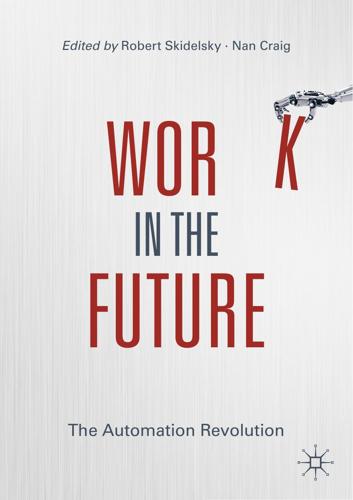
Work in the Future The Automation Revolution-Palgrave MacMillan (2019)
by
Robert Skidelsky Nan Craig
Published 15 Mar 2020
In addition, concerns were raised about my point that the majority of AI researchers tend to separate development of AI technology from its uses and not worry too much about ethical issues. I emphasized that while this is currently the case, things are changing, with technology leaders such as Demis Hassabis from Google Deep Mind promoting ethical usage of AI, and ethics courses being given to computing students. Later, we returned to the question of who makes the decisions about AI usage, and discussed whether this is likely to come from the bottom up, for example from community or consumer groups, and I confessed to being dubious about this.
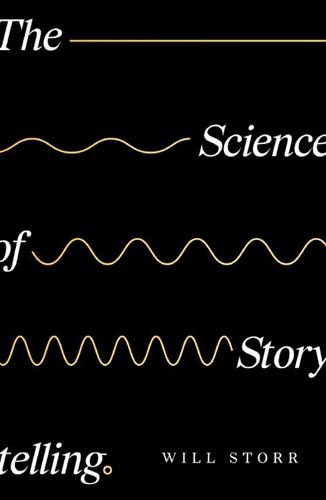
The Science of Storytelling: Why Stories Make Us Human, and How to Tell Them Better
by
Will Storr
Published 3 Apr 2019
Bergen (Basic, 2012) p. 99. For the same reason, active sentence construction: Louder than Words, Benjamin K. Bergen (Basic, 2012) p. 119. to make vivid scenes, three specific qualities: ‘Differential engagement of brain regions within a “core” network during scene construction’, Jennifer Summerfield, Demis Hassabis & Eleanor Maguire, Neuropsychologia, 2010, Vol. 48, 1501–1509. As C. S. Lewis implored a young writer in 1956: http://www.lettersofnote.com/2012/04/c-s-lewis-on-writing.html Only that way: A final lesson from the model-making brain is that simplicity is also crucial. The human beam of attention is narrow.

Empire of AI: Dreams and Nightmares in Sam Altman's OpenAI
by
Karen Hao
Published 19 May 2025
“The thing that sticks in memory was the look of absolute certainty on his face when he talked about sending large rockets to Mars,” Altman wrote later of the experience. “I left thinking ‘huh, so that’s the benchmark for what conviction looks like.’ ” Musk had been deeply concerned about AI for some time. In 2012, he’d met Demis Hassabis, the professorial CEO of the London-based AI lab DeepMind Technologies. Shortly thereafter, Hassabis had also paid Musk a visit at his SpaceX factory. As the two men sat in the canteen, surrounded by the sounds of massive rocket parts being transported and assembled, Hassabis raised the possibility that more advanced AI, of the kind that might one day exceed human intelligence, could pose a threat to humanity.
…
ResNet not only underpins major computer-vision, speech-recognition, and language systems but also was a core ingredient of the first version of DeepMind’s AlphaFold, an AI system released in 2018 that could predict a protein’s 3D structure from its amino acid sequence, crucial for accelerating drug development and understanding disease. (DeepMind’s subsequent advancements in AlphaFold, using a different neural network, would earn Demis Hassabis and another senior research scientist at DeepMind a 2024 Nobel Prize in Chemistry.) And yet, in October 2023, the ideas championed by the Closed side would gain their greatest endorsement yet when they surfaced in the Biden administration’s AI executive order. The order, one of the longest in history, would read like smashed-together documents written by completely different groups—because it was.
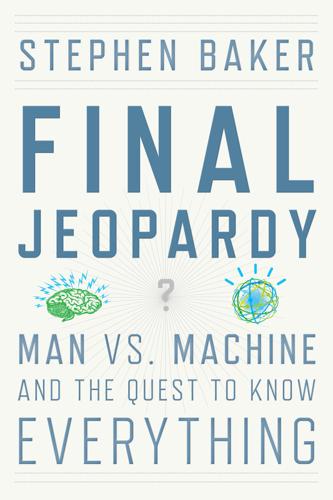
Final Jeopardy: Man vs. Machine and the Quest to Know Everything
by
Stephen Baker
Published 17 Feb 2011
No one was close to replicating the brain in form or function. Still, the scientists at the conference were busy studying it, hoping to glean from its workings single applications that could be taught to computers. The brain, they held, would deliver its treasures bit by bit. Tenenbaum was of this school. And so was Demis Hassabis. A diminutive thirty-four-year-old British neuroscientist, Hassabis told the crowd that technology wasn’t the only thing growing exponentially. Research papers on the brain were also doubling every year. Some fifty thousand academic papers on neuroscience had been published in 2008 alone. “If you looked at neuroscience in 2005, or before that, you’re way out of date now,” he said.
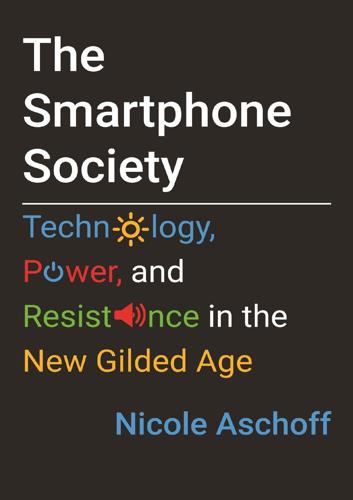
The Smartphone Society
by
Nicole Aschoff
Self-driving cars and the ability of the Alpha Go Zero program to teach itself how to play the ancient and extremely difficult Chinese game of Go using only the game rules and reinforcement learning are just the beginning of a seismic shift rooted in the power of data. The motto of Alphabet subsidiary DeepMind encapsulates this vision of the future: “Solve intelligence and use that to solve everything else.” Run by Demis Hassabis, a neuroscientist, video game developer, and former child chess prodigy, and a team of about two hundred computer scientists and neuroscientists, the Alphabet subsidiary’s researchers have operationalized the idea that intelligence, thought, and perhaps even consciousness are nothing more than a collection of discrete, local processes that can be “solved” with enough computing power and data.

The Dark Cloud: How the Digital World Is Costing the Earth
by
Guillaume Pitron
Published 14 Jun 2023
Thus, some scientists are considering the hypothesis of a superhuman, or even strong, AI that alone could undertake such a mission.52 It would be the ultimate phase of the ‘sustainable digital’ order discussed at the start of this book: ‘green IT’ in its purest form. Entrepreneurs have already declared their ambitions. One of them is Demis Hassabis, chief founder of the UK company DeepMind, whose mission, he says, is twofold: ‘Step one, solve intelligence. Step two, use it to solve everything else’ — that ‘everything else’ includes climate change.53 A report published in 2018 by the consulting firm PricewaterhouseCoopers (PwC) puts it plainly: ‘It’s time to put AI to work for the planet.’54 Overconfidence?

Scary Smart: The Future of Artificial Intelligence and How You Can Save Our World
by
Mo Gawdat
Published 29 Sep 2021
That first time, unfortunately, I was shallow enough to ignore the universe sending me this message loud and clear. Instead, I focused, as most geeks would, on the coolness of what we were building. A couple of years or so before the yellow ball, Google had acquired DeepMind. Back then, the brilliant Demis Hassabis (CEO and founder of DeepMind) stood before the senior leadership group of Google to present to us the technology they had developed. This was the time when they taught AI to play Atari games. It’s not a huge stretch to spot the connection between the way machines learn and the way children do when the demo that is shown to you is of a machine playing a game.
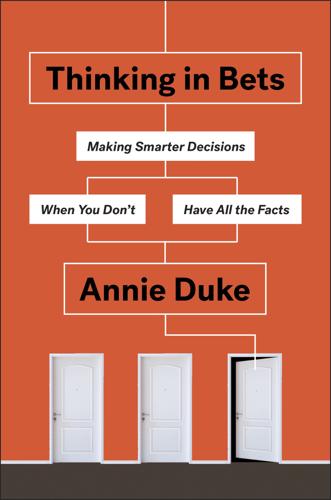
Thinking in Bets
by
Annie Duke
Published 6 Feb 2018
“The Evolutionary Roots of Human Decision Making.” Annual Review of Psychology 66 (January 2015): 321–47. Savage, David. “Clarence Thomas Is His Own Man.” Los Angeles Times, Nation, July 3, 2011. http://articles.latimes.com/2011/jul/03/nation/la-na-clarence-thomas-20110703/2. Schacter, Daniel, Donna Addis, Demis Hassabis, Victoria Martin, R. Nathan Spreng, and Karl Szpunar. “The Future of Memory: Remembering, Imagining, and the Brain.” Neuron 76, no. 4 (November 21, 2012): 677–94. Schessler-Jandreau, Imke. “Fat America: A Historical Consideration of Diet and Weight Loss in the US.” 21st ICC 2008 (2009): 88–93.

War
by
Sebastian Junger
Published 15 Nov 2010
Crawford, MC, USN, and Capt. Ransom J. Arthur, MC, USN. “The Stress of Aircraft Carrier Landings.” Psychosomatic Medicine, Vol. 32, No. 6, November–December 1970. Milne, David. “Can People Really Be Scared to Death?” Psychiatric News, Vol. 37, No. 11, June 7, 2002. Mobbs, Dean, Predrag Petrovic, Jennifer L. Marchant, Demis Hassabis, Nikolaus Weiskopf, Ben Seymour, Raymond J. Dolan, and Christopher D. Frith. “When Fear Is Near: Threat Imminence Elicits Prefrontal-Periaqueductal Gray Shifts in Humans.” Science, Vol. 317, August 24, 2007. Moran, Lord. The Anatomy of Courage. Constable & Robinson Ltd., 1945. Morgan, Andrew.
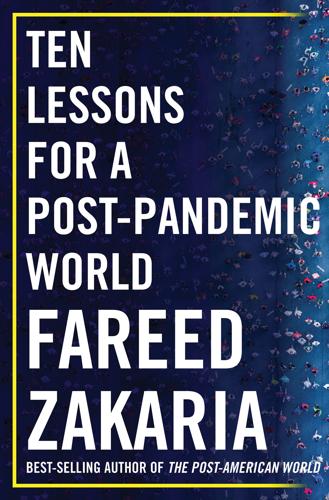
Ten Lessons for a Post-Pandemic World
by
Fareed Zakaria
Published 5 Oct 2020
Norton, 1963), 358–73. 113 Jetson of the 1960s cartoon: “works three hours a day, three days a week,” per Sarah Ellison, “Reckitt Turns to Jetsons to Launch Detergent Gels,” Wall Street Journal, January 13, 2003; pushing a button, per Hanna-Barbera Wiki, “The Jetsons,” https://hanna-barbera.fandom.com/wiki/The_Jetsons. 113 four-day workweek: Zoe Didali, “As PM Finland’s Marin Could Renew Call for Shorter Work Week,” New Europe, January 2, 2020, https://www.neweurope.eu/article/finnish-pm-marin-calls-for-4-day-week-and-6-hours-working-day-in-the-country/. 114 “bullshit jobs”: David Graeber, Bullshit Jobs: A Theory (New York: Simon & Schuster, 2018). 115 “slaves of time without purpose”: McEwan, Machines Like Me. 116 atoms in the observable universe: David Silver and Demis Hassabis, “AlphaGo: Mastering the Ancient Game of Go with Machine Learning,” Google DeepMind, January 27, 2016, https://ai.googleblog.com/2016/01/alphago-mastering-ancient-game-of-go.html. 116 all fifty-seven games: Kyle Wiggers, “DeepMind’s Agent57 Beats Humans at 57 Classic Atari Games,” Venture Beat, March 31, 2020; Rebecca Jacobson, “Artificial Intelligence Program Teaches Itself to Play Atari Games—And It Can Beat Your High Score,” PBS NewsHour, February 20, 2015. 117 Stuart Russell: Stuart Russell, “3 Principles for Creating Safer AI,” TED2017, https://www.ted.com/talks/stuart_russell_3_principles_for_creating_safer_ai/transcript?

The Upside of Irrationality: The Unexpected Benefits of Defying Logic at Work and at Home
by
Dan Ariely
Published 31 May 2010
Chu-Min Liao and Richard Masters, “Self-Focused Attention and Performance Failure under Psychological Stress,” Journal of Sport and Exercise Psychology 24, no. 3 (2002): 289–305. Kenneth McGraw, “The Detrimental Effects of Reward on Performance: A Literature Review and a Prediction Model,” in The Hidden Costs of Reward: New Perspectives on the Psychology of Human Motivation, ed. Mark Lepper and David Greene (New York: Erlbaum, 1978). Dean Mobbs, Demis Hassabis, Ben Seymour, Jennifer Marchant, Nikolaus Weiskopf, Raymond Dolan. and Christopher Frith, “Choking on the Money: Reward-Based Performance Decrements Are Associated with Midbrain Activity,” Psychological Science 20, no. 8 (2009): 955–962. Chapter 2: The Meaning of Labor: What Legos Can Teach Us about the Joy of Work Based on Dan Ariely, Emir Kamenica, and Dražen Prelec, “Man’s Search for Meaning: The Case of Legos,” Journal of Economic Behavior and Organization 67, nos. 3–4 (2008): 671–677.

I, Warbot: The Dawn of Artificially Intelligent Conflict
by
Kenneth Payne
Published 16 Jun 2021
The use of electronic games as a test-bed for reinforcement learning has been a particular research focus. The attraction to military minds is obvious—games are adversarial, and the goal is to win. The differences, however, are also profound, as we’ll see. 2015 saw the public arrival of DeepMind, a relative British newcomer to AI research, newly acquired by Google. DeepMind’s founder Demis Hassabis had trained in neuroscience, and he was explicit: DeepMind intended to create ‘general’ AI, with the attributes of human intelligence. Its first landmark breakthrough was an eighties throwback: classic Atari arcade games. The scoreboard in Space Invaders is an ideal motivator for reinforcement learning.

AI Superpowers: China, Silicon Valley, and the New World Order
by
Kai-Fu Lee
Published 14 Sep 2018
Kurzweil predicts that by 2029 we will have computers with intelligence comparable to that of humans (i.e., AGI), and that we will reach the singularity by 2045. Other utopian thinkers see AGI as something that will enable us to rapidly decode the mysteries of the physical universe. DeepMind founder Demis Hassabis predicts that the creation of superintelligence will allow human civilization to solve intractable problems, producing inconceivably brilliant solutions to global warming and previously incurable diseases. With superintelligent computers that understand the universe on levels that humans cannot even conceive of, these machines become not just tools for lightening the burdens of humanity; they approach the omniscience and omnipotence of a god.
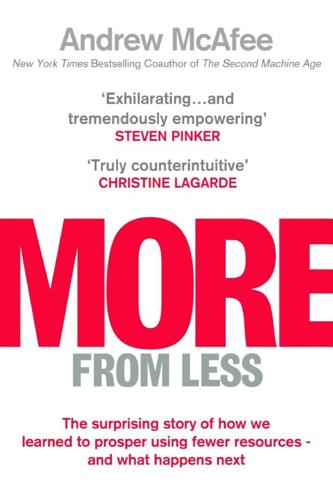
More From Less: The Surprising Story of How We Learned to Prosper Using Fewer Resources – and What Happens Next
by
Andrew McAfee
Published 30 Sep 2019
But thanks to digital tools, we’re learning quickly. In 2018, as part of a contest, the AlphaFold software developed by Google DeepMind correctly guessed the structure of twenty-five out of forty-three proteins it was shown; the second-place finisher guessed correctly three times. DeepMind cofounder Demis Hassabis says, “We [haven’t] solved the protein-folding problem, this is just a first step… but we have a good system and we have a ton of ideas we haven’t implemented yet.” As these good ideas accumulate, they might well let us make spider-strength materials. Energy. One of humanity’s most urgent tasks in the twenty-first century is to reduce greenhouse gas emissions.

Possible Minds: Twenty-Five Ways of Looking at AI
by
John Brockman
Published 19 Feb 2019
We tend to underestimate the complexity and creativity of the human brain and how amazingly general it is. If AI is to become more humanlike in its abilities, the machine-learning and neuroscience communities need to interact closely, something that is happening already. Some of today’s greatest exponents of machine learning—such as Geoffrey Hinton, Zoubin Ghahramani, and Demis Hassabis—have backgrounds in cognitive neuroscience, and their success has been at least in part due to attempts to model brainlike behavior in their algorithms. At the same time, neurobiology has also flourished. All sorts of tools have been developed to watch which neurons are firing and genetically manipulate them and see what’s happening in real time with inputs.
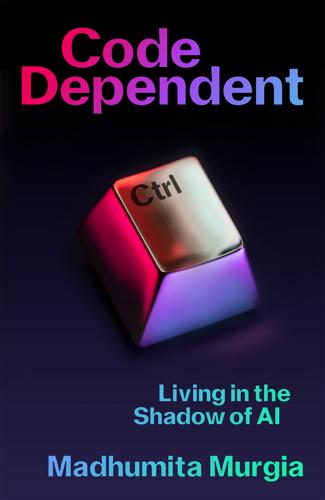
Code Dependent: Living in the Shadow of AI
by
Madhumita Murgia
Published 20 Mar 2024
* When I started out as a technology reporter, I was drawn to AI because of the powerful possibilities it offered – a way to augment human intelligence and solve impossible problems. It could be humanity’s ultimate, and perhaps final, invention. In fact, AI is viewed by its many cheerleaders as a transhumanist technology – an extension of ourselves, a species upgrade that could turn us into better, shinier creatures. Demis Hassabis, the chief executive of leading AI company Google DeepMind, often describes his goal simply as ‘solving intelligence’, as if human intellect were a mathematical equation or a videogame level to complete. The opportunities for the betterment of humanity seemed infinite. But my quest to find out how AI had transformed the lives of people across the world changed me too.

On the Edge: The Art of Risking Everything
by
Nate Silver
Published 12 Aug 2024
What about the Sentinelese, an indigenous group of roughly one hundred people living on North Sentinel Island in the Bay of Bengal, who have remained hostile to outsiders and largely undisturbed by modern technology? Nope, the Machine Gods will hunt them down. Billionaires in outer space? They won’t make it either. Yudkowsky referenced a conversation between Elon Musk and Demis Hassabis, the cofounder of Google DeepMind. In Yudkowsky’s stylized version of the dialog, Musk expressed his concern about AI risk by suggesting it was “important to become a multiplanetary species—you know, like set up a Mars colony. And Demis said, ‘They’ll follow you.’ ” Before I unpack how Yudkowsky came to this grim conclusion, I should say that he’d slightly mellowed on his certainty of p(doom) by the time I caught up with him again at the Manifest conference in September 2023.
…
L., 124 Clinton, Hillary, 267 closing line value, 205–6, 206, 481 Coates, John, 89–91, 99, 102, 116, 125 cognitive bias, 481 Collison, Patrick, 262, 263, 466, 494 combo (poker), 481 community cards (board) (poker), 41, 480, 481 competitiveness, 25–26 abuse and, 118 game theory and, 52, 66 lack of money drive and, 243 poker and, 112, 118, 120, 243 resentment and, 223, 277–78 River-Village conflict and, 28–29 sports betting and, 173 venture capital and, 249 compute (AI), 481 computer applications sports betting and, 172 See also AI; solvers Computer Group, 195–96 Confidence Game, The (Konnikova), 123–24, 309 confidence interval, 481 confirmation bias, 28, 264, 481 conformity, 286–87, 288, 318, 330–31n Conrad, Joseph, 253 conscientious contrarians, 481 consensus, 481 consequentialism, 359, 481, 533n See also utilitarianism Constantin, Sarah, 24 contrarianism AI existential risk and, 414 conscientious, 481 finance and, 240–42 founders and, 403 politics and, 242, 254n Silicon Valley and, 25, 254, 414 Trump and, 150 venture capital and, 249, 284–87 See also anti-authority attitude; independence cooler (poker), 482 coordinated cards (poker), 482 Coplan, Shayne, 370 corpus (AI), 482 correlation, 482 Cotra, Ajeya, 443, 455, 457, 458 courage, 222–24 cover (sports betting), 482 COVID-19, 6–9 Boredom Markets Hypothesis, 310, 480 casinos and, 7–8, 10, 10 cryptocurrency and, 6, 310, 312–13 effective altruism and, 360, 534n expertise and, 271 prisoner’s dilemma and, 507–8n probabilistic thinking and, 16 quantification and, 348–50 raise-or-fold attitude and, 230–31, 521n risk-taking behavior and, 6–7, 8–9, 10, 10 River-Village conflict and, 28, 29 societal institutions and, 456–57 Cowen, Tyler, 374n, 378, 402, 489, 494 credit card roulette, 482 Cromwell’s Rule, 415–16, 482 cryptocurrency anonymity and, 325 Archipelago and, 22, 310 bacchanalian atmosphere and, 306–7 bubble in, 306–7, 307, 310, 311–18, 317 business model of, 308–9 COVID-19 and, 6, 310, 312–13 defined, 482 focal points and, 329 fraud and, 124, 308 game theory and, 316–18, 317, 327 gender and, 312 history of, 322–24, 326 HODL, 308, 309, 310, 312, 317, 318, 487 meme creation of value and, 315–16 moral hazard and, 261 naïvete and, 310–11 poker and, 109 as Ponzi scheme, 309, 337 profitability for early adopters, 310 skill and, 308 See also Bankman-Fried, Sam; NFTs CryptoPunks, 311, 312, 325, 330, 332–33, 482 Cuban, Mark, 225 Cuban Missile Crisis, 424 cults of personality, 31, 338–39 culture wars, 29, 272–73, 341n, 377 D Damore, James, 273 DAOs (decentralized autonomous organizations), 307, 325 data science, 482 David, Larry, 313 Davidow, Matthew, 134–35 dealer (poker), 482 dealflow (venture capital), 482 decadence, 466 decels, 477 decentralized finance (DeFi), 324–25 deception, 58–59, 60, 63, 100, 206–7, 482 deception value, 60, 482 decision science, 427–28 decoupling, 24–25, 26, 27, 352, 482, 505n deductive reasoning, 482 Deeb, Shaun, 95 Deep Blue, 60 defect (game theory), 482 degens (gambling), 9, 114, 278–79, 482 Demis Hassabis, 416 Denton, Nick, 249–50n, 274 deontology, 359, 368, 481, 482 Designing Casinos to Dominate the Competition (Friedman), 162–63 determinism, 253–55, 264, 297, 482 deterrence, 483 See also mutually assured destruction DFS (Daily Fantasy Sports), 198, 199, 483 diminishing returns, 483 directionally correct, 483 Dirty Diaper (poker), 74–75, 483 discount rate, 483 disruptiveness, 257–58, 269–70 domain knowledge, 483 dominant strategies, 54–55, 483 DonBest, 483 donkbet (poker), 483 doomers, 483 See also AI existential risk doomsday machines, 425, 483 double down (blackjack), 483 Douthat, Ross, 466 Downriver, 21–22, 374, 483 See also casinos drawing dead, 483 Dresher, Melvin, 52, 494 drowning child parable, 357, 358, 359, 368, 483 Dr.

The Big Nine: How the Tech Titans and Their Thinking Machines Could Warp Humanity
by
Amy Webb
Published 5 Mar 2019
The number of scientific papers on AI published by Chinese researchers more than doubled between 2010 and 2017.35 To be fair, papers and patents don’t necessarily mean that research will find its way into widespread use, but it was an early indication of how rattled Chinese leaders were at all the progress being made in the West—especially when it came to Go. By January 2014, Google had begun investing significantly in AI, which included more than $500 million to acquire a hot deep-learning startup called DeepMind and its three founders, neuroscientist Demis Hassabis, a former child prodigy in chess, machine-learning researcher Shane Legg, and entrepreneur Mustafa Suleyman. Part of the team’s appeal: they’d developed a program called AlphaGo. Within months, they were ready to test AlphaGo against a real human player. A match was arranged between DeepMind and Fan Hui, a Chinese-born professional Go player and one of the strongest professional masters in Europe.
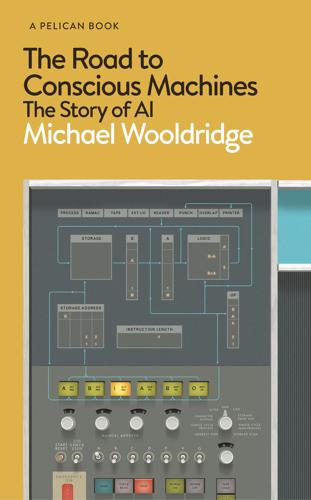
The Road to Conscious Machines
by
Michael Wooldridge
Published 2 Nov 2018
For example, it turns out that road signs can be altered in such a way that, while a human has no difficulty interpreting them, they are completely misunderstood by the neural nets in a driverless car. Before we can use deep learning in sensitive applications, we need to understand these problems in much more detail. DeepMind The story of DeepMind, which I referred to earlier in this chapter, perfectly epitomizes the rise of deep learning. The company was founded in 2010 by Demis Hassabis, an AI researcher and computer games enthusiast, together with his school friend and entrepreneur Mustafa Suleyman, and they were joined by Shane Legg, a computational neuroscientist that Hassabis met while working at University College London. As we heard, Google acquired DeepMind early in 2014; I can recall seeing stories in the press about the acquisition, and starting in surprise when I saw that DeepMind were an AI company.
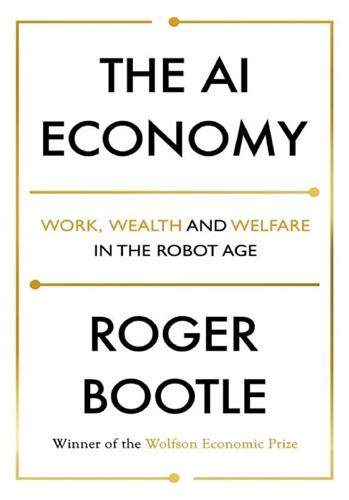
The AI Economy: Work, Wealth and Welfare in the Robot Age
by
Roger Bootle
Published 4 Sep 2019
More importantly, we could see the widespread use of shared-use vehicles or electric vehicles, or both, without seeing a large-scale move to driverless vehicles. For, even without the ride sharing and the switch from petrol to electric, the widespread use of driverless cars is not as straightforward as is usually implied. Feasibility is not the issue. Safety is. Demis Hassabis, one of the founders of DeepMind, said in May 2018: “How do you ensure, mathematically, that systems are safe and will only do what we think they are going to do when they are out in the wild.”8 His misgivings are fully justified. Despite the claims of the manufacturers and developers of driverless vehicles that they are ultrasafe, a 2015 study from the University of Michigan discovered that the crash rate is higher for driverless vehicles.9 The study suggested that, when they occur, crashes are almost always not the fault of the driverless cars.

Exponential: How Accelerating Technology Is Leaving Us Behind and What to Do About It
by
Azeem Azhar
Published 6 Sep 2021
Further thanks to the many teachers who helped me understand the world of computing, politics and economics, including John Wilcox, Stephen Bishop, Nick Lord, Ray Bradley, Mike Clugston, Don Markwell, Vijay Joshi, the late John Lucas, the late David Bostock and the late Jack Schofield. Many thanks to the dozens of guests on my podcast whose ideas have helped enrich my thesis, including Laetitia Vitaud, Bill Janeway, Carissa Véliz, Tony Blair, Demis Hassabis, Sam Altman, Philip Auerswald, Scott Santens, Jeff Sachs, Andrew Yang, Jack Clark, Trent McConaghy, Michael Liebreich, Casper Klynge, Kate Raworth, Sir Richard Barrons, Joanna Bryson, Stuart Russell, Cory Doctorow, Kai-Fu Lee, Matt Clifford, Marietje Schaake, Yuval Noah Harari, Mariana Mazzucato, Mike Zelkind, Josh Hoffman, Binyamin Applebaum, Kate Crawford, Matt Ocko, Jeremy O’Brien, Sam Altman, Audrey Tang, Vijay Pande, Matt Clifford, Fei-Fei Li, Adena Friedman, Kersti Kaljulaid, Astro Teller, Deep Nishar, Cesar Hidalgo, Ian Bremmer, Brad Smith, Nicole Eagan, Meredith Whittaker, Gary Marcus, Andrew Ng, Shoshana Zuboff, Jürgen Schmidhuber, Gina Neff, Missy Cummings, Eric Topol, Cathie Wood, Michael Liebreich, Mariarosaria Taddeo and Ronit Ghose.
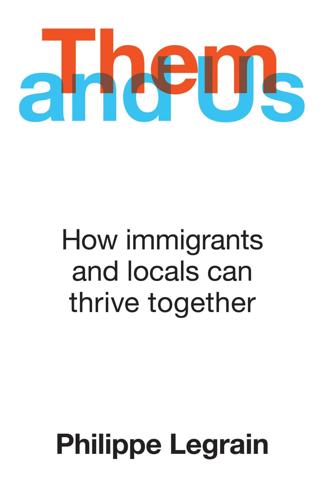
Them and Us: How Immigrants and Locals Can Thrive Together
by
Philippe Legrain
Published 14 Oct 2020
English physicist Francis Crick and American biologist James Watson concluded that it consisted of a three-dimensional double helix, based on the earlier discovery of DNA by a Swiss scientist, Friedrich Miescher, developed by Phoebus Levene, a Lithuanian-born American biochemist, and Erwin Chargaff, an Austro-Hungarian one.2 Or consider DeepMind, a London-based company doing groundbreaking practical research on artificial intelligence. Mustafa Suleyman, whose father was a Syrian-born taxi driver and mother an English nurse, met Demis Hassabis, whose father was Greek-Cypriot and mother Chinese Singaporean, when they were teenagers in north London. ‘Demis and I had conversations about how to impact the world, and he’d argue that we need to build these grand simulations that one day will model all the complex dynamics of our financial systems and solve our toughest social problems,’ Mustafa explains.

Why Machines Learn: The Elegant Math Behind Modern AI
by
Anil Ananthaswamy
Published 15 Jul 2024
They are (in the order of their appearance in the book): Ilya Sutskever, George Nagy (who studied with the late Frank Rosenblatt), Bernard Widrow, Philip Stark, Patrick Juola, Marcello Pelillo, Peter Hart, Emery Brown, John Abel, Bernhard Boser, Isabelle Guyon, Manfred K. Warmuth, David Haussler, John Hopfield, George Cybenko, Geoffrey Hinton, Yann LeCun, Mikhail Belkin, Alethea Power, Peter Bartlett, and Alexei Efros. Also, thanks to Demis Hassabis for an inspiring conversation. I’m also grateful to Rao Akella, François Chollet, Tim Kietzmann, Dmitry Krotov, Grace Lindsay, Krishna Pant, Sriram Srinivasan, and Sonali Tamhankar, for reading parts of the book, correcting errors, and providing insightful suggestions and encouragement. Most important, my deepest gratitude to Mikhail (Misha) Belkin, of the University of California, San Diego, and Shachi Gosavi, of the National Centre for Biological Sciences, Bengaluru, India.

The Everything Blueprint: The Microchip Design That Changed the World
by
James Ashton
Published 11 May 2023
Airports, steelworks, telecoms providers, chemical firms and food companies with decades of history had all passed into foreign hands with little or no state intervention and barely a murmur of protest. Cutting-edge ideas that originated from the UK’s widely respected academic community went the same way. One example, DeepMind, an artificial-intelligence start-up co-founded by Demis Hassabis, a former child chess prodigy and neuroscientist, was bought for £400m by Google in 2014, just two years after it was set up. Autonomy, a FTSE 100 data-sorting company that was larger and longer established, was sold to Hewlett-Packard for $11bn in 2011 – although the deal later descended into acrimony.

Machine, Platform, Crowd: Harnessing Our Digital Future
by
Andrew McAfee
and
Erik Brynjolfsson
Published 26 Jun 2017
So we made appointments in Cambridge, New York, London, San Francisco, Silicon Valley, Washington, DC, and other places, and set out. In addition to the interviewees who are quoted in this book, many others taught us a lot: Daron Acemoglu Susan Athey David Autor Jeff Bezos Nick Bloom Christian Catalini Michael Chui Paul Daugherty Tom Davenport Tom Friedman Demis Hassabis Reid Hoffman Jeremy Howard Dean Kamen Andy Karsner Christine Lagarde Yann LeCun Shane Legg John Leonard David Lipton Tom Malone James Manyika Kristina McElheren Tom Mitchell Elon Musk Ramez Naam Tim O’Reilly Gill Pratt Francesa Rossi Daniela Rus Stuart Russell Eric Schmidt Mustafa Suleyman Max Tegmark Sebastian Thrun But you can put off writing for only so long.

The Long History of the Future: Why Tomorrow's Technology Still Isn't Here
by
Nicole Kobie
Published 3 Jul 2024
‘We took cutting edge research straight out of an academic research lab and launched it, in just a little over six months,’ wrote Google’s head of the image search team in a blog post. A year later, in 2014, Google bought DeepMind, a medical AI company, for £400 million, a massive sum of money for another company that hadn’t yet released a single product. As with DNNresearch, the aim here was to capture the people – in this case, Demis Hassabis, Mustafa Suleyman, and Shane Legg. Two years later, DeepMind’s AlphaGo algorithm beat the best human players. Around the same time, Ian Goodfellow, then at Google, came up with the generative adversarial network (GAN), where two different types of neural networks play a game: one makes output that looks real, while the other has to guess what data is made up, creating a positive feedback loop that makes better and better images (or other output) – yes, deep learning is weird.

These Strange New Minds: How AI Learned to Talk and What It Means
by
Christopher Summerfield
Published 11 Mar 2025
Geoffrey Hinton, who is introduced early in the book as the researcher with the best claim to have invented deep learning, was awarded the Nobel Prize in Physics in 2024. Almost everyone agreed that Hinton deserved a Nobel, but the award left many actual physicists scratching their heads about what neural networks have to do with their field. A day later, my friend Demis Hassabis, who founded DeepMind, and John Jumper, first author on the AlphaFold paper, shared the Nobel Prize in Chemistry for their use of AI to predict how proteins fold. Less consternation here – this was one of the most significant scientific advances of our times. There are still five months to go until these pages see the light of day.

Homo Deus: A Brief History of Tomorrow
by
Yuval Noah Harari
Published 1 Mar 2015
Deep Blue was given a head start by its creators, who preprogrammed it not only with the basic rules of chess, but also with detailed instructions regarding chess strategies. A new generation of AI uses machine learning to do even more remarkable and elegant things. In February 2015 a program developed by Google DeepMind learned by itself how to play forty-nine classic Atari games. One of the developers, Dr Demis Hassabis, explained that ‘the only information we gave the system was the raw pixels on the screen and the idea that it had to get a high score. And everything else it had to figure out by itself.’ The program managed to learn the rules of all the games it was presented with, from Pac-Man and Space Invaders to car racing and tennis games.

Coders: The Making of a New Tribe and the Remaking of the World
by
Clive Thompson
Published 26 Mar 2019
Use Google,” Washington Post, March 14, 2016, accessed August 19, 2018, https://www.washingtonpost.com/national/health-science/how-you-beat-one-of-the-best-go-players-in-the-world-use-google/2016/03/14/1efd1176-e6fc-11e5-b0fd-073d5930a7b7_story.html. atoms in the universe: Alan Levinovitz, “The Mystery of Go, the Ancient Game That Computers Still Can’t Win,” Wired, May 12, 2014, accessed August 19, 2018, https://www.wired.com/2014/05/the-world-of-computer-go; David Silver and Demis Hassabis, “AlphaGo: Mastering the Ancient Game of Go with Machine Learning,” Google AI Blog, January 27, 2016, accessed August 19, 2018, https://ai.googleblog.com/2016/01/alphago-mastering-ancient-game-of-go.html. model of the game: Silver and Hassabis, “AlphaGo.” tales about AlphaGo: Cade Metz, “The Sadness and Beauty of Watching Google’s AI Play Go,” Wired, March 11, 2016, accessed August 19, 2018, https://www.wired.com/2016/03/sadness-beauty-watching-googles-ai-play-go.

Superintelligence: Paths, Dangers, Strategies
by
Nick Bostrom
Published 3 Jun 2014
For extensive discussions that have helped clarify my thinking I am grateful to a large set of people, including Ross Andersen, Stuart Armstrong, Owen Cotton-Barratt, Nick Beckstead, David Chalmers, Paul Christiano, Milan Ćirković, Daniel Dennett, David Deutsch, Daniel Dewey, Eric Drexler, Peter Eckersley, Amnon Eden, Owain Evans, Benja Fallenstein, Alex Flint, Carl Frey, Ian Goldin, Katja Grace, J. Storrs Hall, Robin Hanson, Demis Hassabis, James Hughes, Marcus Hutter, Garry Kasparov, Marcin Kulczycki, Shane Legg, Moshe Looks, Willam MacAskill, Eric Mandelbaum, James Martin, Lillian Martin, Roko Mijic, Vincent Mueller, Elon Musk, Seán Ó hÉigeartaigh, Toby Ord, Dennis Pamlin, Derek Parfit, David Pearce, Huw Price, Martin Rees, Bill Roscoe, Stuart Russell, Anna Salamon, Lou Salkind, Anders Sandberg, Julian Savulescu, Jürgen Schmidhuber, Nicholas Shackel, Murray Shanahan, Noel Sharkey, Carl Shulman, Peter Singer, Dan Stoicescu, Jaan Tallinn, Alexander Tamas, Max Tegmark, Roman Yampolskiy, and Eliezer Yudkowsky.

Four Battlegrounds
by
Paul Scharre
Published 18 Jan 2023
Brown, Measuring the Algorithmic Efficiency of Neural Networks (arXiv.org, n.d.), https://arxiv.org/pdf/2005.04305.pdf. 298compute efficiency for both training and inference: Hernandez and Brown, Measuring the Algorithmic Efficiency of Neural Networks, 9–10; Radosvet Desislavov et al., Compute and Energy Consumption Trends in Deep Learning Inference (arXiv.org, September 12, 2021), https://arxiv.org/pdf/2109.05472.pdf. 298progress in algorithmic efficiency: Katja Grace, Algorithmic Progress in Six Domains (technical report no. 2013-3, Machine Intelligence Research Institute, 2013), https://intelligence.org/files/AlgorithmicProgress.pdf. 298compute-heavy models much more accessible: Desislavov et al., Compute and Energy Consumption Trends in Deep Learning Inference. 298ASIC optimized for deep learning: “Cloud TPU,” Google Cloud, n.d., https://cloud.google.com/tpu; “Cloud Tensor Processing Units (TPUs),” Google Cloud, n.d., https://cloud.google.com/tpu/docs/tpus. 298reduced energy consumption: The metric DeepMind used to compare AlphaGo versions, thermal design power (TDP), is not a direct measure of energy consumption. It is a rough first-order proxy, however, for power consumption. David Silver and Demis Hassabis, “AlphaGo Zero: Starting From Scratch,” DeepMind Blog, October 18, 2017, https://deepmind.com/blog/article/alphago-zero-starting-scratch. 298reduced compute usage to only 4 TPUs: Silver and Hassabis, “AlphaGo Zero: Starting From Scratch”; “AlphaGo,” DeepMind, n.d., https://deepmind.com/research/case-studies/alphago-the-story-so-far; David Silver et al., “Mastering the Game of Go without Human Knowledge,” Nature 550 (October 19 2017), 354–355, https://www.nature.com/articles/nature24270.epdf. 298reduced the compute needed for training by a factor of eight: Hernandez and Brown, Measuring the Algorithmic Efficiency of Neural Networks, 18. 298may make AI models available: Desislavov et al., Compute and Energy Consumption Trends in Deep Learning Inference; Sharir et al., The Cost of Training NLP Models, 3. 298AI training costs could be as much as thirty times higher: Khan and Mann, AI Chips, 26. 299costly and locks out university researchers: Rodney Brooks, “A Better Lesson,” Rodney Brooks (personal website), March 19, 2019, https://rodneybrooks.com/a-better-lesson/; Kevin Vu, “Compute Goes Brrr: Revisiting Sutton’s Bitter Lesson for Artificial Intelligence,” DZone.com, March 11, 2021, https://dzone.com/articles/compute-goes-brrr-revisiting-suttons-bitter-lesson; Bommasani et al., On the Opportunities and Risks of Foundation Models. 299contributes to carbon emissions: “On the Dangers of Stochastic Parrots”; Brooks, “A Better Lesson”; Vu, “Compute Goes Brrr”; Lasse F.

The Irrational Bundle
by
Dan Ariely
Published 3 Apr 2013
Chu-Min Liao and Richard Masters, “Self-Focused Attention and Performance Failure under Psychological Stress,” Journal of Sport and Exercise Psychology 24, no. 3 (2002): 289–305. Kenneth McGraw, “The Detrimental Effects of Reward on Performance: A Literature Review and a Prediction Model,” in The Hidden Costs of Reward: New Perspectives on the Psychology of Human Motivation, ed. Mark Lepper and David Greene (New York: Erlbaum, 1978). Dean Mobbs, Demis Hassabis, Ben Seymour, Jennifer Marchant, Nikolaus Weiskopf, Raymond Dolan. and Christopher Frith, “Choking on the Money: Reward-Based Performance Decrements Are Associated with Midbrain Activity,” Psychological Science 20, no. 8 (2009): 955–962. Chapter 2: The Meaning of Labor: What Legos Can Teach Us about the Joy of Work Based on Dan Ariely, Emir Kamenica, and Dražen Prelec, “Man’s Search for Meaning: The Case of Legos,” Journal of Economic Behavior and Organization 67, nos. 3–4 (2008): 671–677.

Artificial Intelligence: A Modern Approach
by
Stuart Russell
and
Peter Norvig
Published 14 Jul 2019
The potential for AI and robotics to free humanity from menial repetitive work and to dramatically increase the production of goods and services could presage an era of peace and plenty. The capacity to accelerate scientific research could result in cures for disease and solutions for climate change and resource shortages. As Demis Hassabis, CEO of Google DeepMind, has suggested: “First solve AI, then use AI to solve everything else.” Long before we have an opportunity to “solve AI,” however, we will incur risks from the misuse of AI, inadvertent or otherwise. Some of these are already apparent, while others seem likely based on current trends: •Lethal autonomous weapons: These are defined by the United Nations as weapons that can locate, select, and eliminate human targets without human intervention.